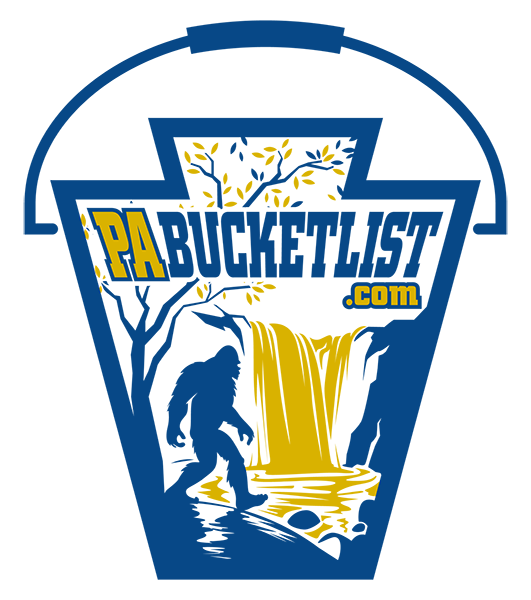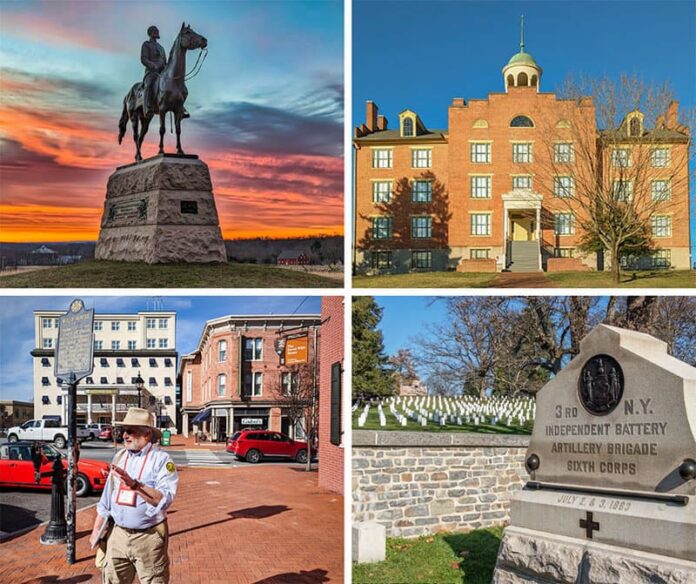
If you’re looking for the best things to see and do in Gettysburg, you’re in the right place!
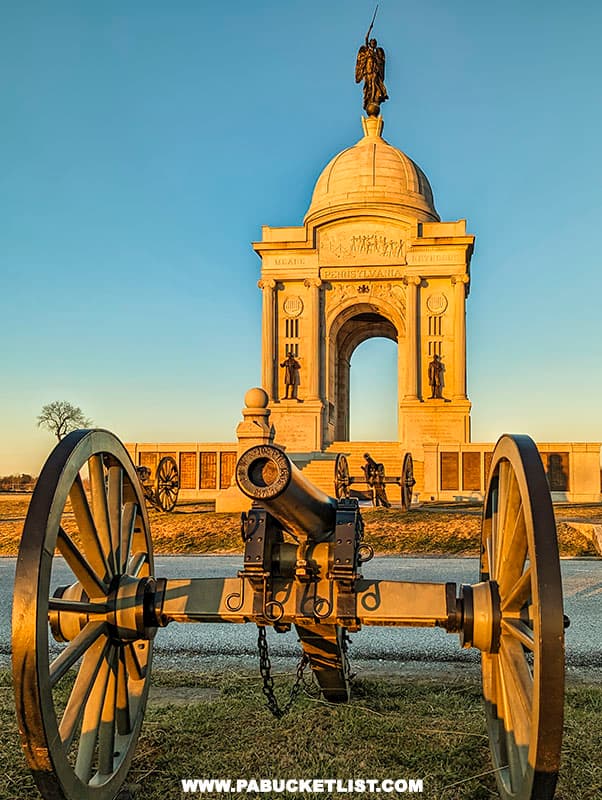
Perhaps no small town in America has been defined by a singular event more so than Gettysburg, which found itself at the epicenter of the bloodiest battle ever fought on American soil, from July 1-3, 1863.
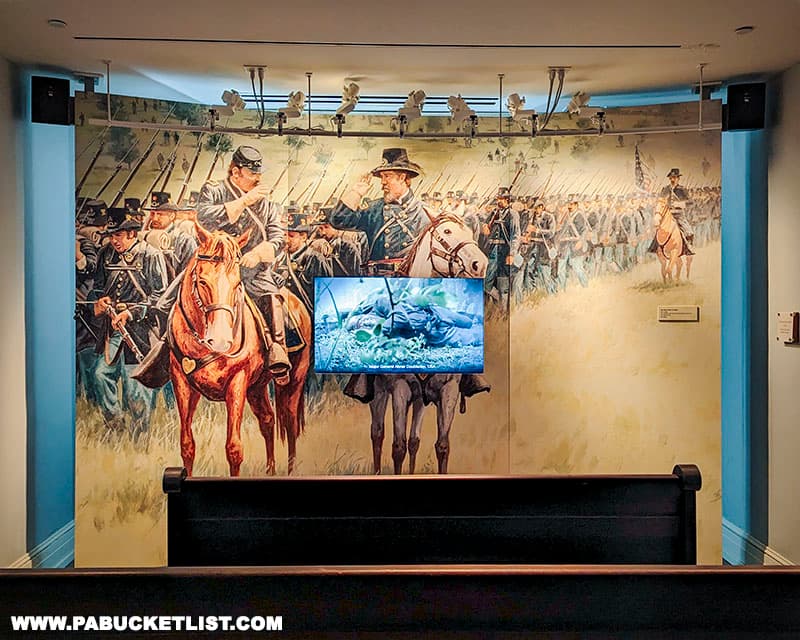
Out of respect, out of curiosity, or out of the desire to walk on legendary ground, people began flocking to Gettysburg nearly as soon as the guns there fell silent, and battle-related tourism continues to be a huge part of the Gettysburg story in modern times.
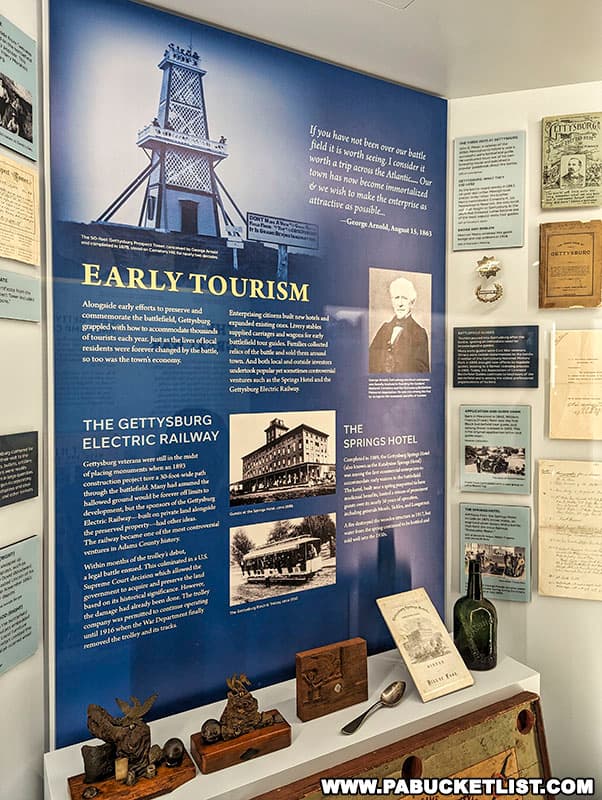
And catering to the modern-day Gettysburg tourist are dozens of museums, tours, restaurants, and Civil War-themed attractions, all putting their own spin on the legacy of the battle.
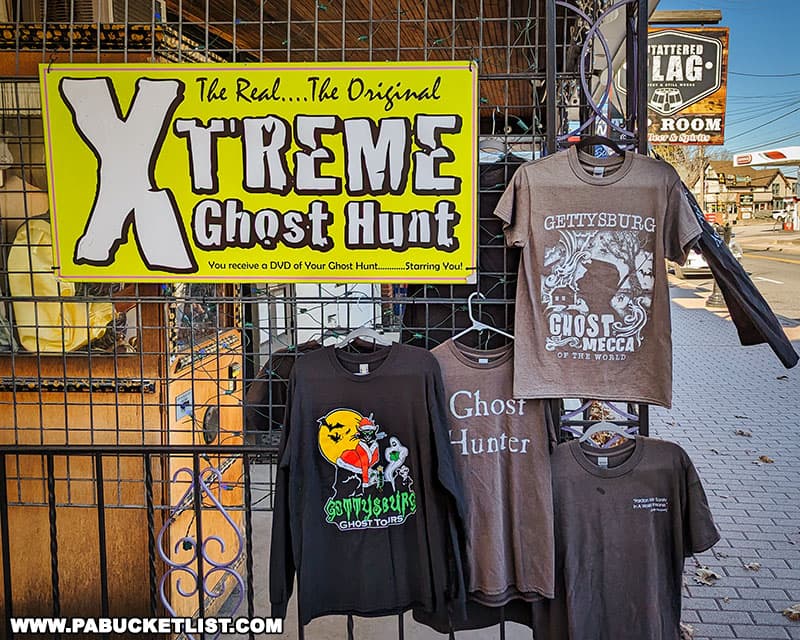
What follows is a list of what I feel are 16 of the best things to see and do in Gettysburg, based upon my own personal experiences visiting the town.
Simply click on the blue text links on the map above or in the descriptions below to read more in-depth information about each destination.
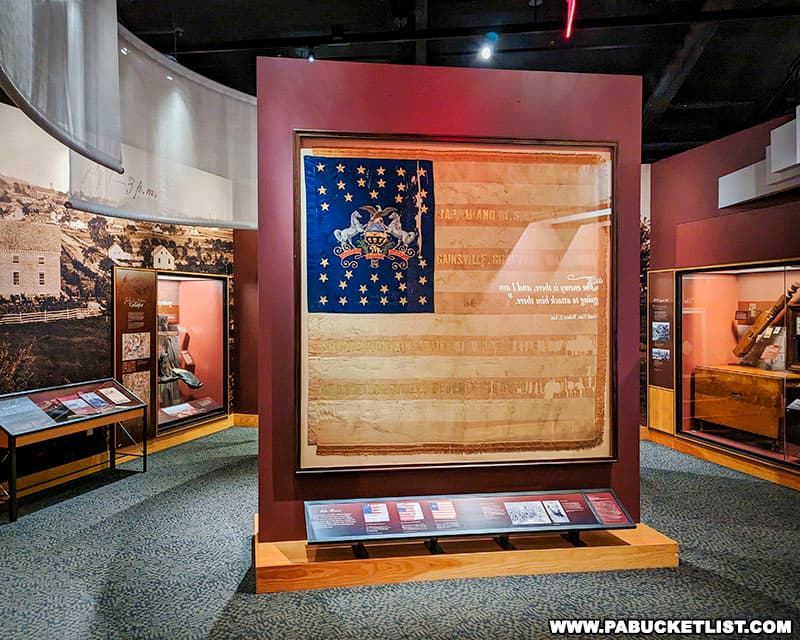
1. The Gettysburg National Military Park Museum & Visitor Center
There is no better place to begin your visit to the battlefield than the The Gettysburg National Military Park Museum & Visitor Center.
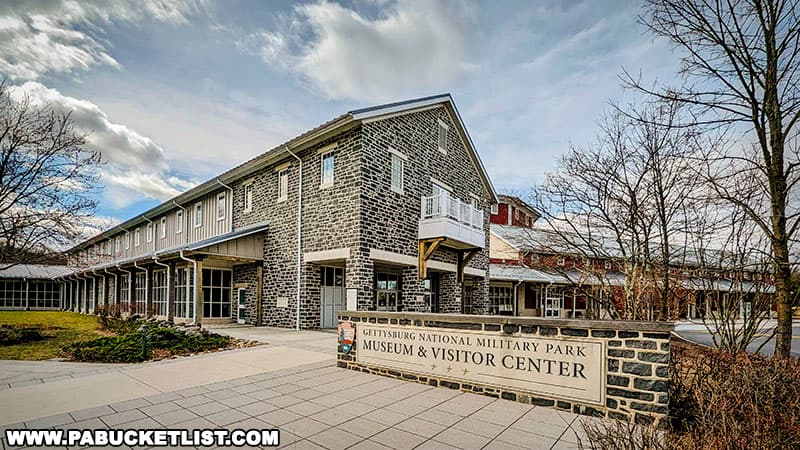
This beautiful facility is privately owned & operated by the Gettysburg Foundation (in partnership with the National Park Service), and provides visitors with a broad-based overview of the Battle of Gettysburg via three separate but complementary attractions.
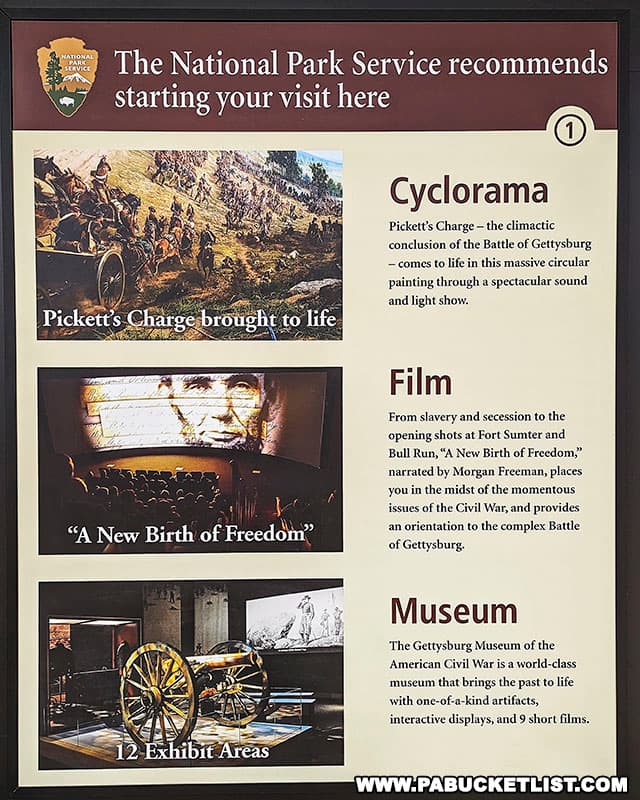
- “A New Birth of Freedom” is a 20-minute film, narrated by Morgan Freeman, that provides context as to the causes of the Civil War and how the Battle of Gettysburg helped shape the outcome of that war.
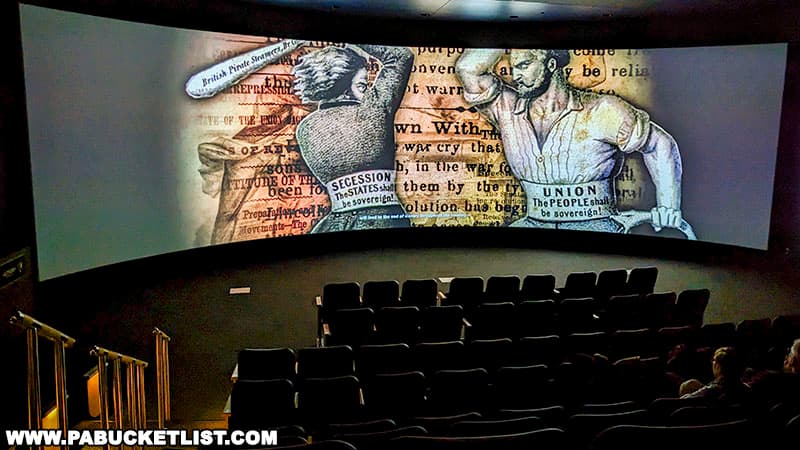
- The Gettysburg Cyclorama is a 360-degree, hand-painted canvas created in 1884, depicting Pickett’s Charge at Gettysburg.
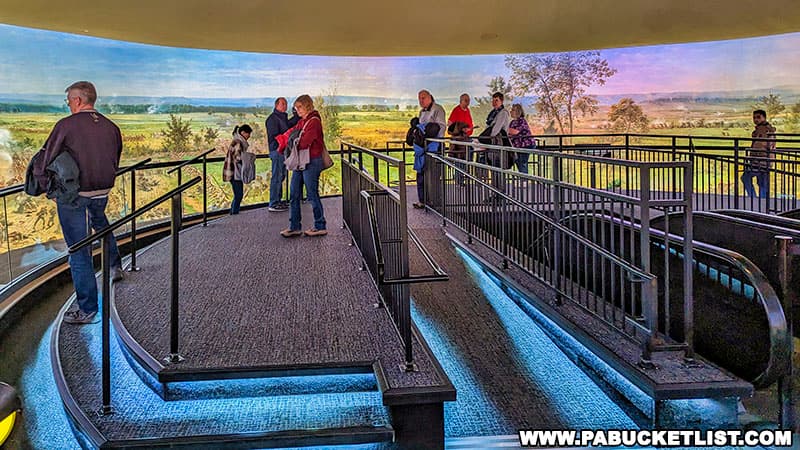
Originally displayed in Boston in 1884 and relocated to Gettysburg in 1913, the cyclorama was the IMAX of the late 1800s, and the Gettysburg Cyclorama continues to be a popular attraction to this day.
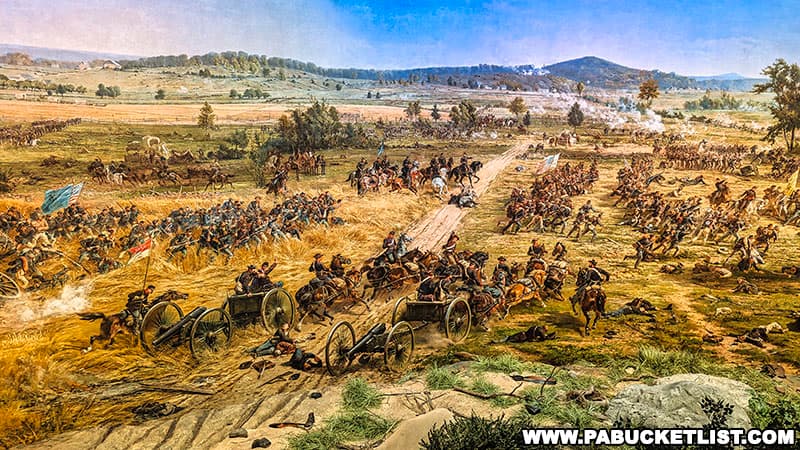
- The Gettysburg Museum of the American Civil War features 12 exhibit areas, 9 short films, and artifacts from one of the largest collections of Civil War relics in the world.
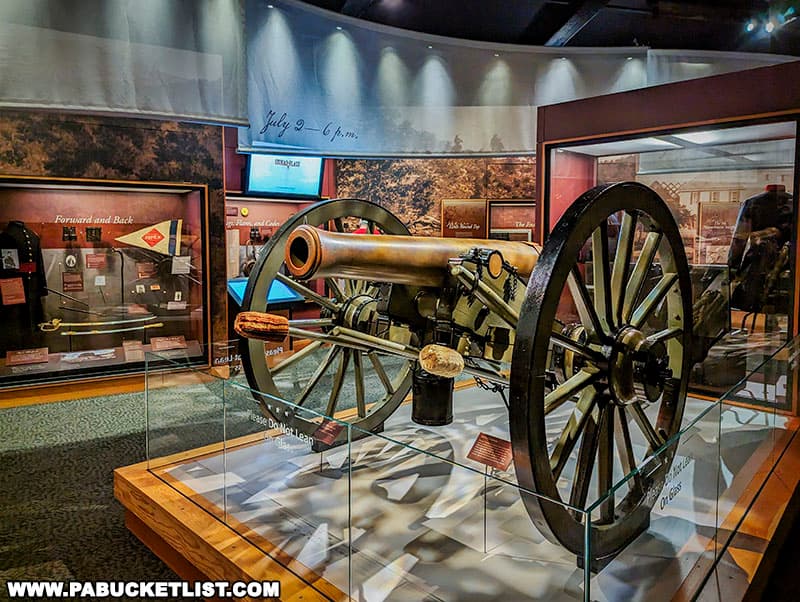
Taken together, these three attractions at the Visitor Center will provide you with a better understanding of what you’re looking at as you tour the sprawling Gettysburg battlefield.
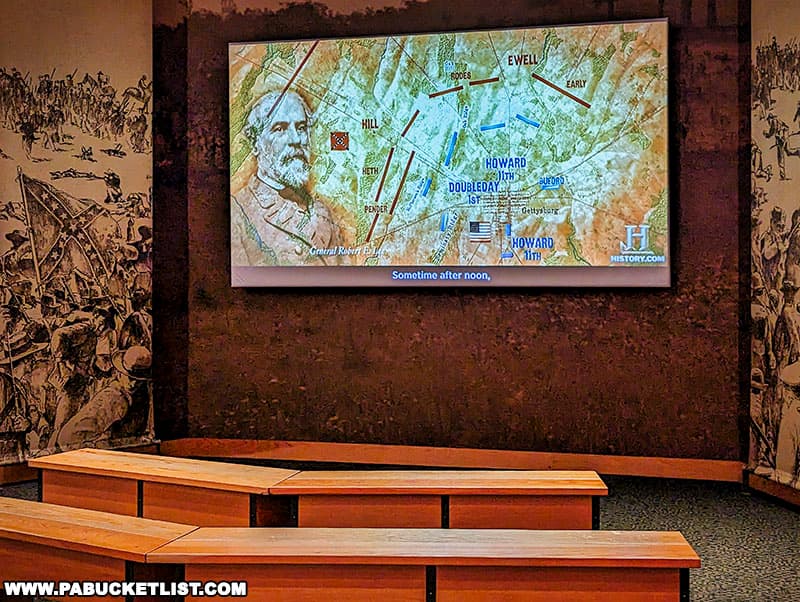
2. The Gettysburg Battlefield
There is no larger or more important site in Gettysburg than the battlefield itself.
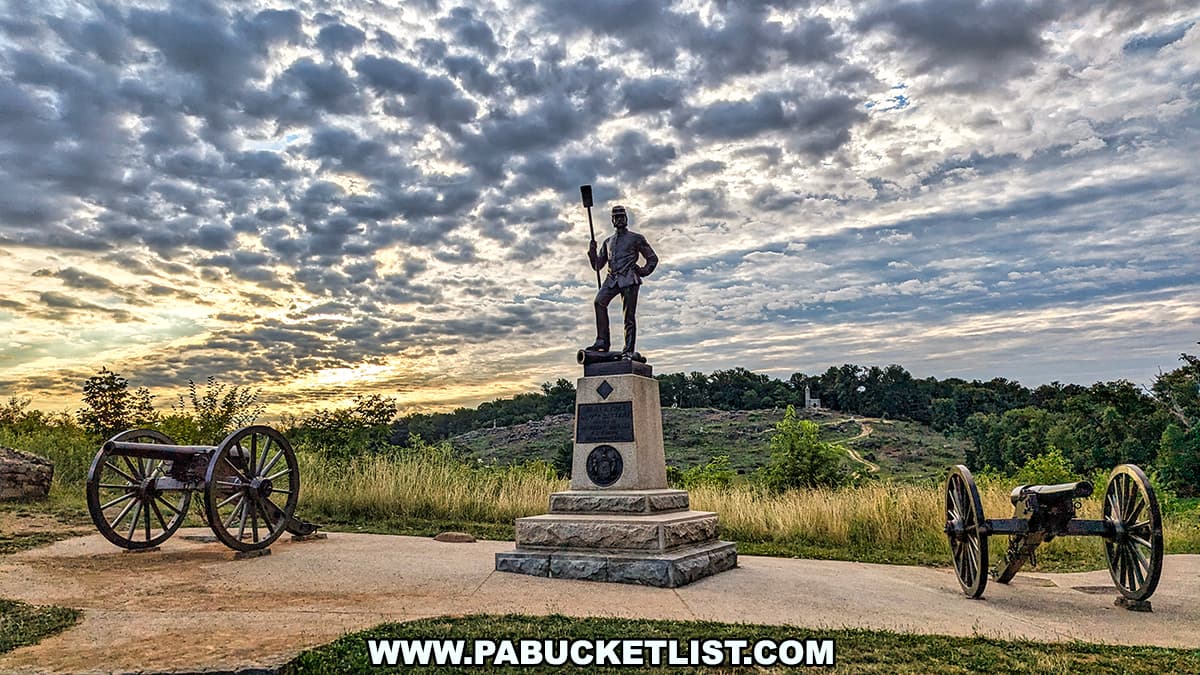
The National Military Park at Gettysburg covers roughly 6000 acres, and contains more than 1,300 monuments.
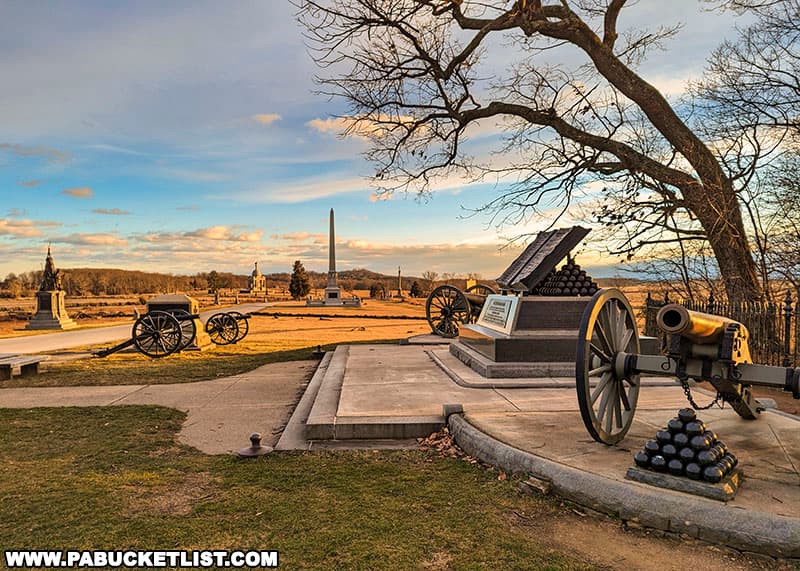
There are lots of ways to tour the battlefield, from taking a guided bus tour, to hiring a private guide, to simply driving around and exploring it on your own.
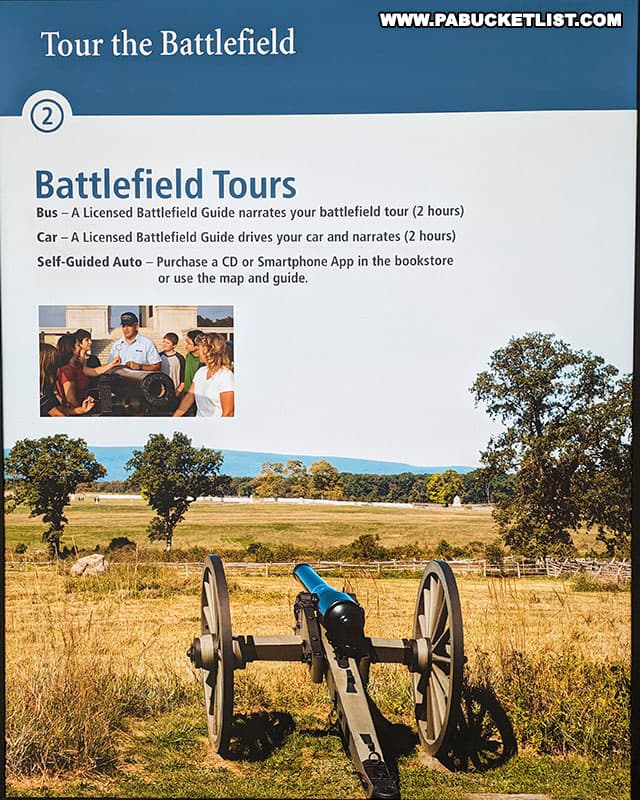
The battlefield and roads are open daily thirty minutes before sunrise to thirty minutes after sunset.
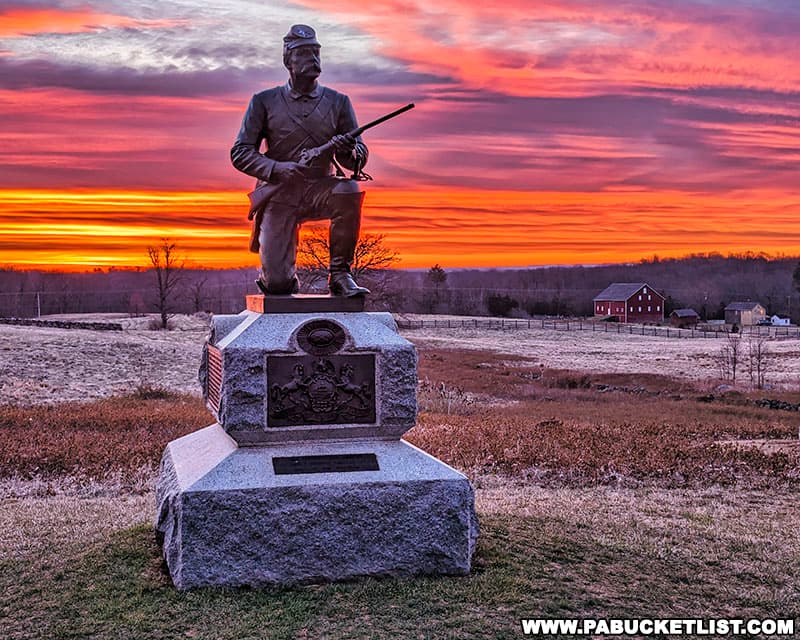
3. Soldiers’ National Cemetery
The Soldiers’ National Cemetery in Gettysburg is some of the most hallowed ground in Pennsylvania.
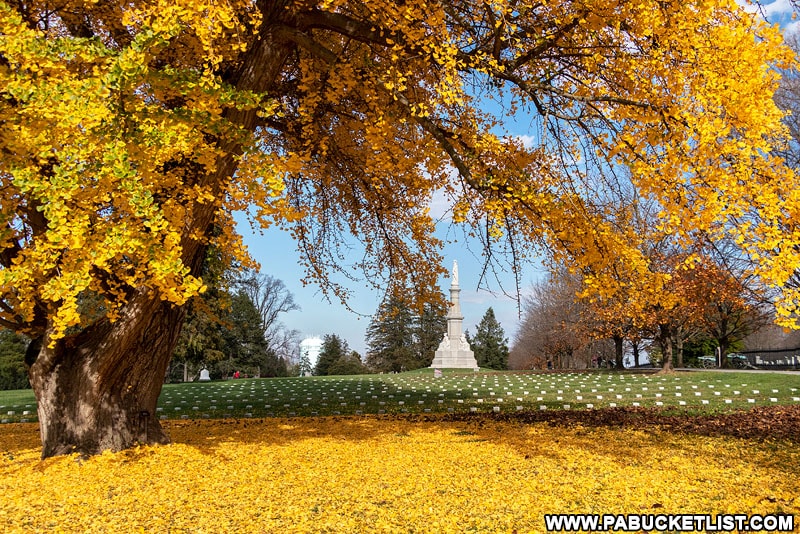
Cemetery Hill, near the site from which Union forces repelled Pickett’s Charge on Cemetery Ridge, was in the months after the Battle of Gettysburg transformed into the final resting place for over 3,000 fallen Union soldiers.
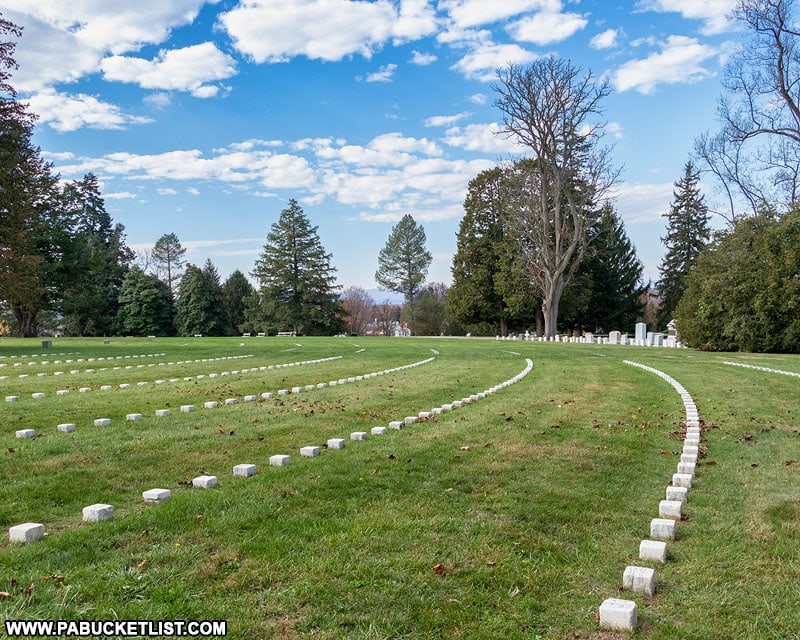
At a ceremony dedicating the newly-created cemetery on November 19, 1863 (4 months after the Battle of Gettysburg), President Abraham Lincoln delivered what is considered to be one of the most iconic speeches in American history, what later became known as the “Gettysburg Address”.
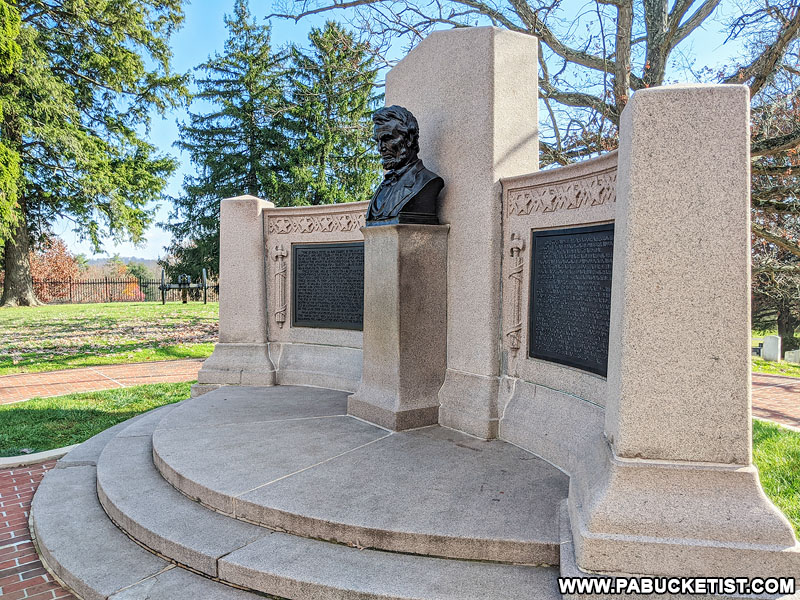
4. The Seminary Ridge Museum
The former Lutheran Seminary in Gettysburg, now the Seminary Ridge Museum, served as both an observation post and a hospital during the Battle of Gettysburg.
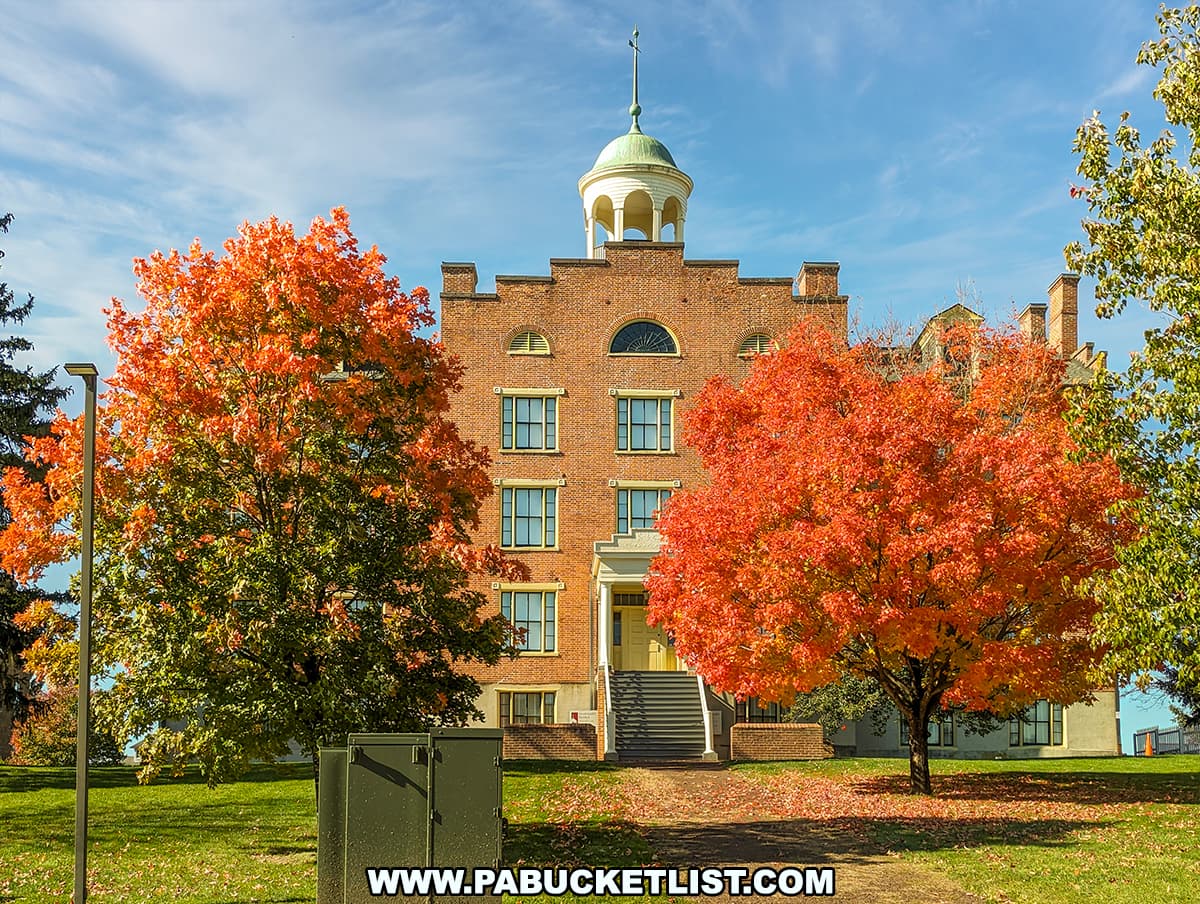
Several floors of interactive exhibits and artifact displays highlight the role the seminary played in the Battle of Gettysburg.
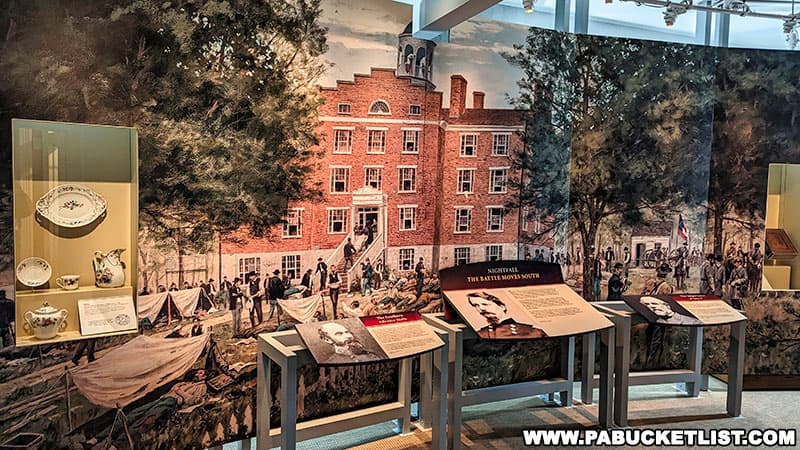
The Cupola Tour takes you up into the very top of the Seminary, where you can experience the same commanding view that made it a valuable observation post during the battle.
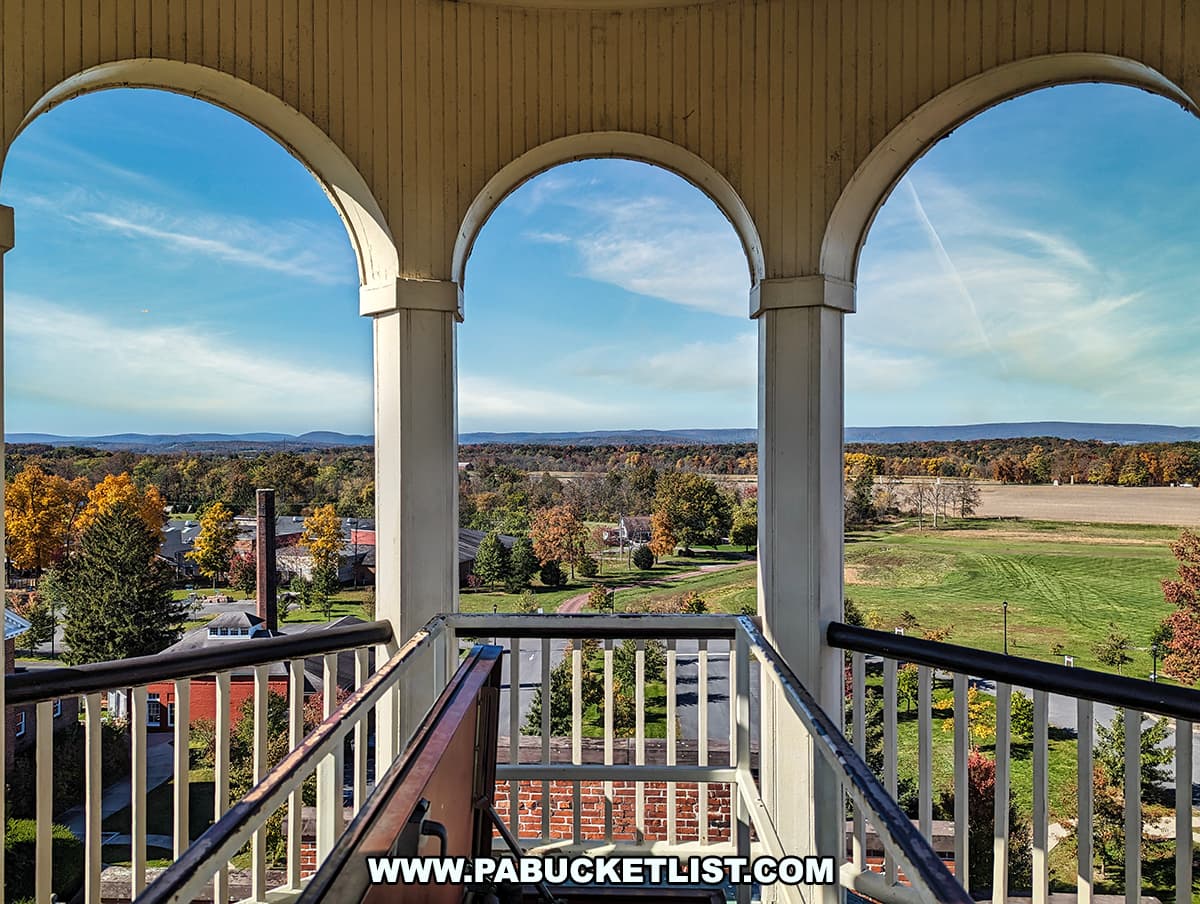
5. Downtown Gettysburg Walking Tour
The town of Gettysburg itself was a warzone during the Battle of Gettysburg, and taking a guided walking tour of the town is a great way to learn about the civilians’ experiences before, during and after the 3 day battle.
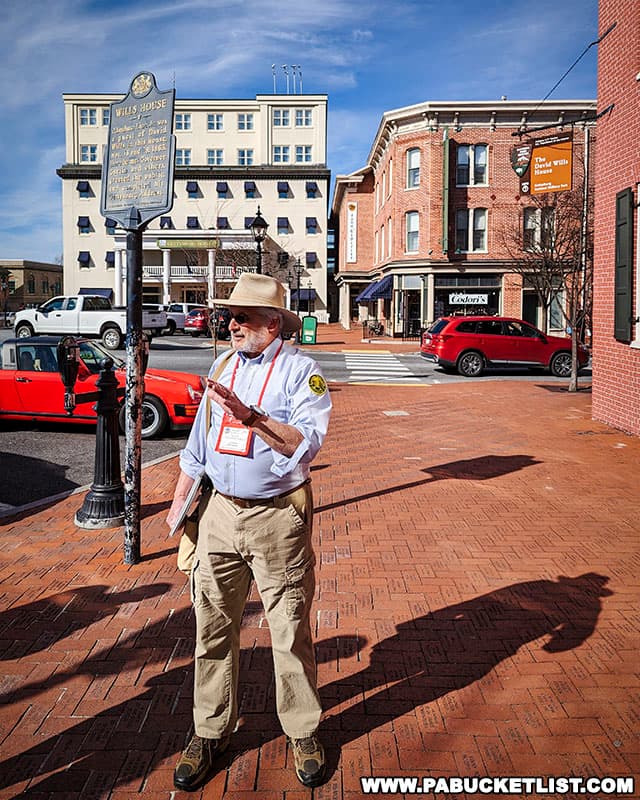
In addition, you’ll learn more about President Lincoln’s visit to Gettysburg for the dedication of the National Cemetery.
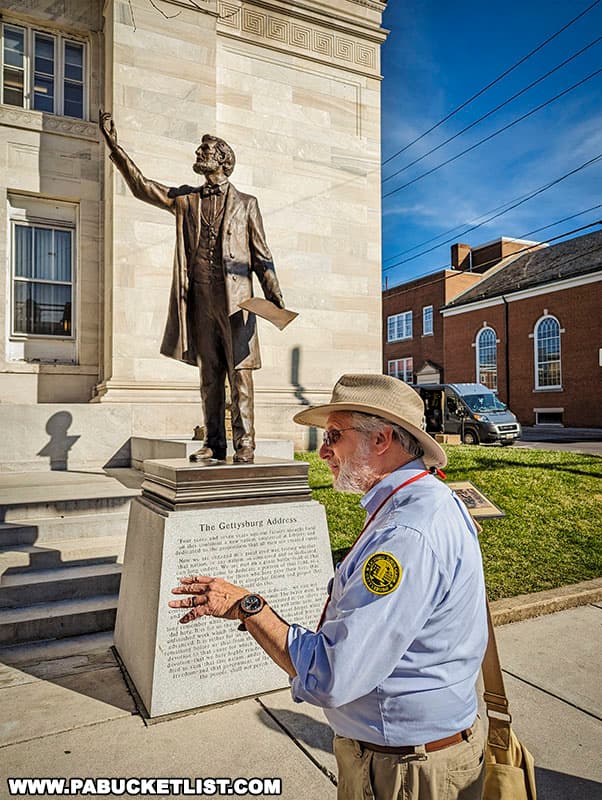
Walking tours can be tailored to cover a variety of subjects, from the Colonial Period in Gettysburg up to the current time.
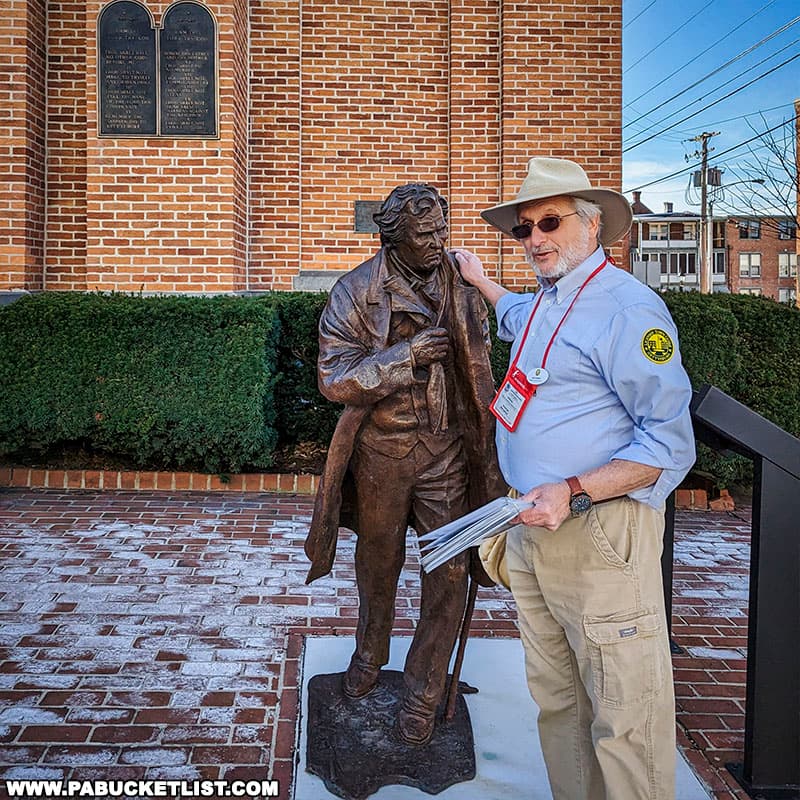
6. The Shriver House
The Shriver House gives you a unique perspective on how the Battle of Gettysburg and the Civil War affected the Shriver family, who built this beautiful brick home in Gettysburg in 1860.
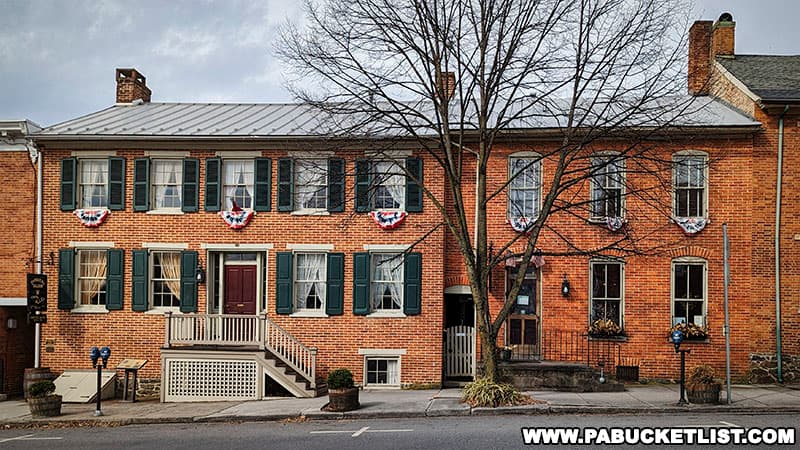
Some of the rooms are decorated as they would have been prior to the war reaching Gettysburg.
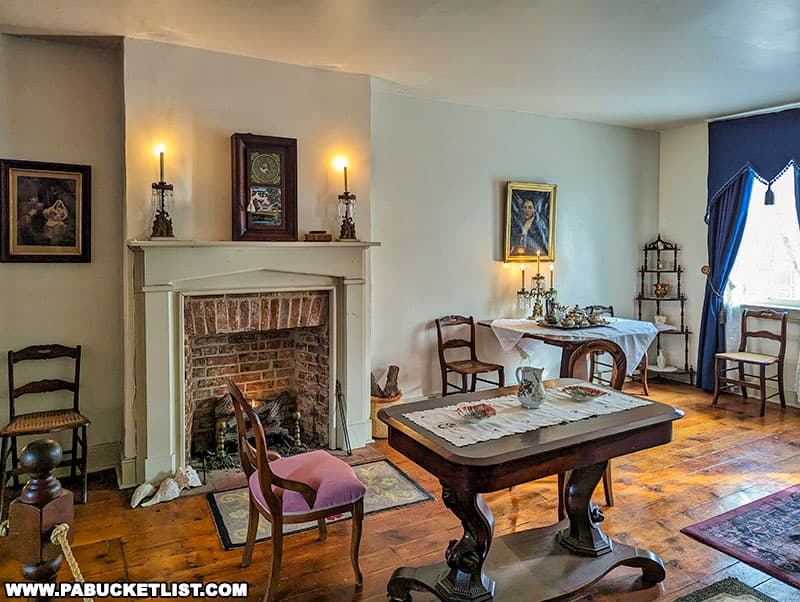
While other rooms show what the house looked like after it was commandeered by Confederate soldiers and used for, among other things, a sniper’s nest.
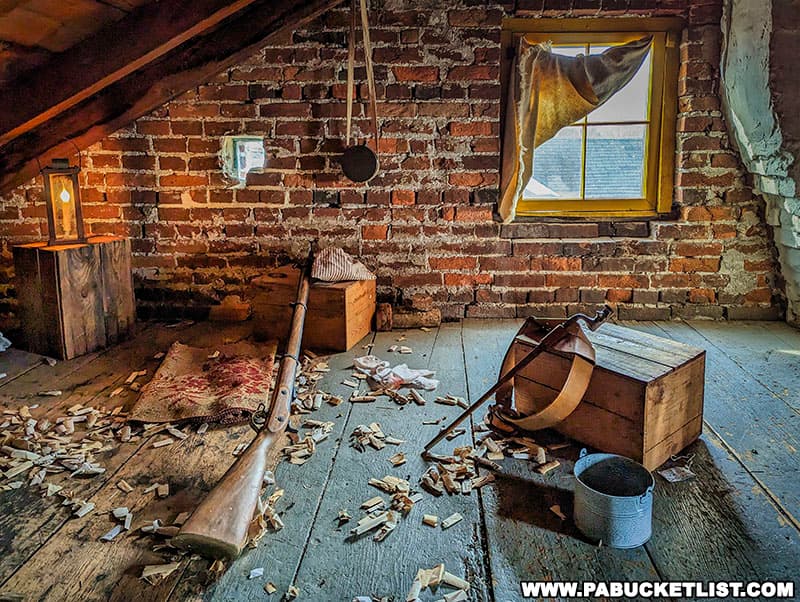
If you want to get an intimate look at the Battle of Gettysburg from a civilian perspective, the Shriver House is a must-see.
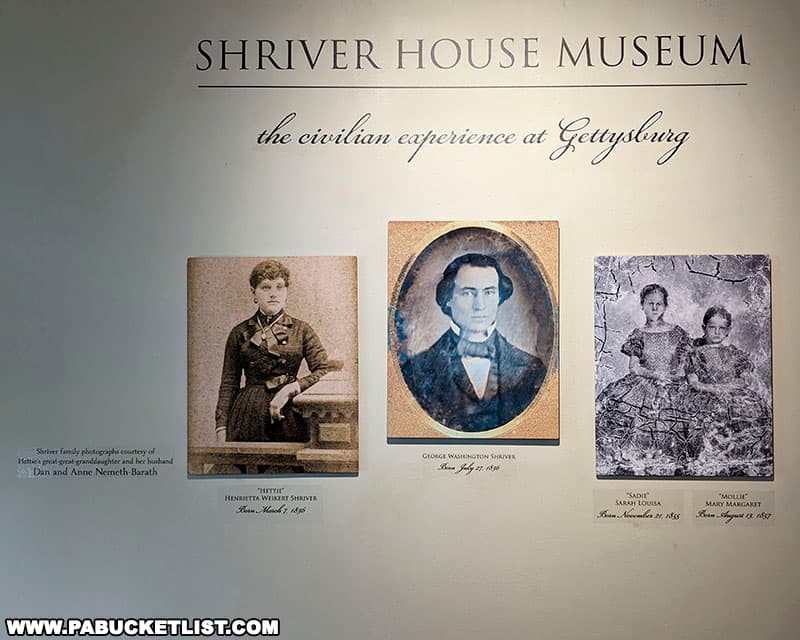
7. The Jennie Wade House
The Jennie Wade House is a shrine to the only civilian casualty during the Battle of Gettysburg, 20 year-old Jennie Wade.
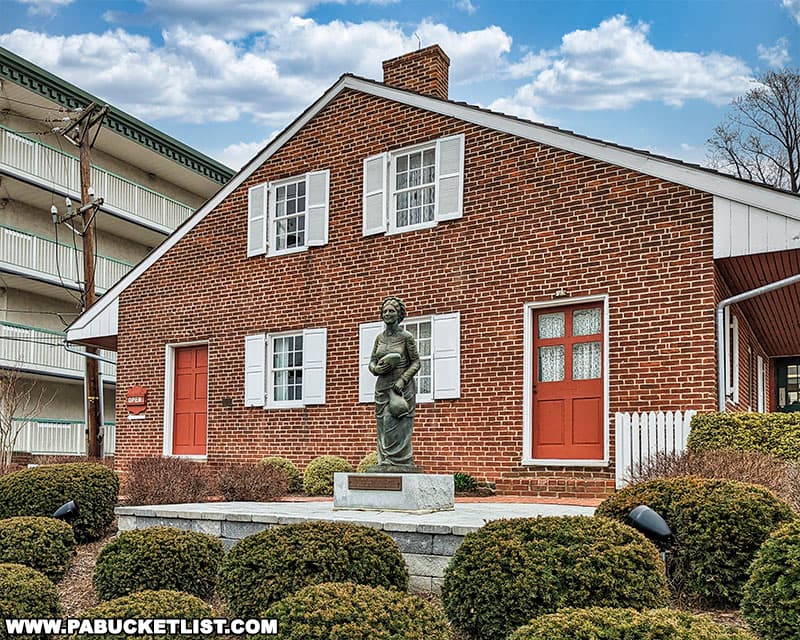
Guides in period attire recount the story of how Jennie was kneading dough in the kitchen when a rifle bullet pierced two doors and claimed her life.
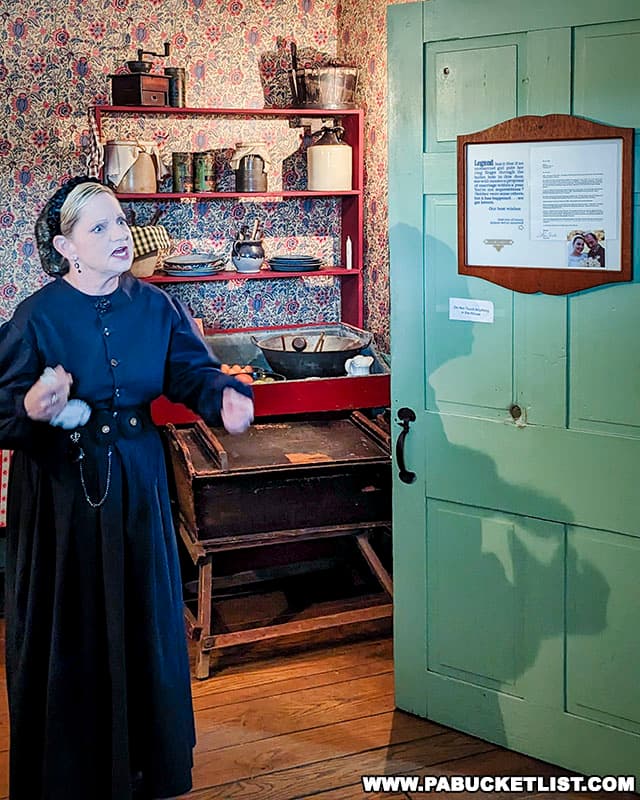
Jennie Wade is laid to rest across the street from where she was killed, at Evergreen Cemetery.
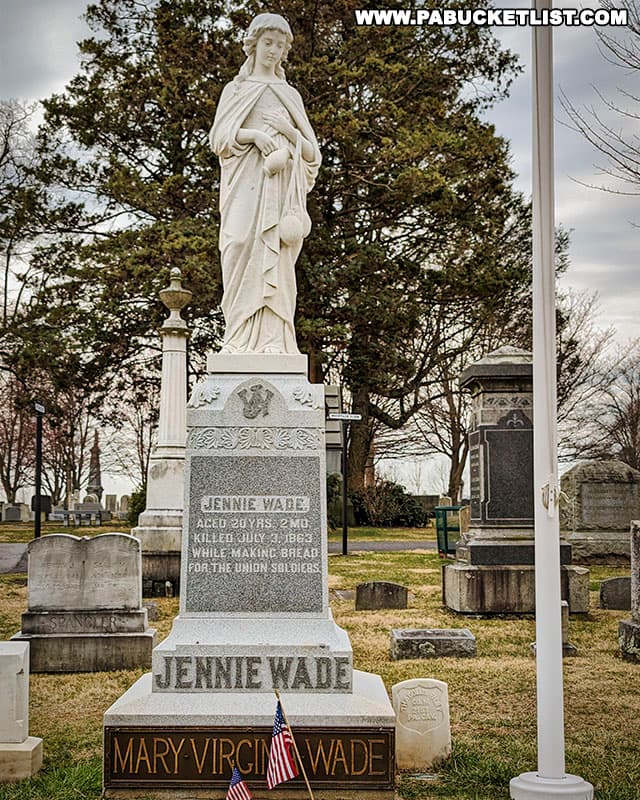
8. Children of Gettysburg 1863 Museum
The Children of Gettysburg 1863 museum does an admirable job tackling the formidable task of explaining the Battle of Gettysburg in terms children can understand.
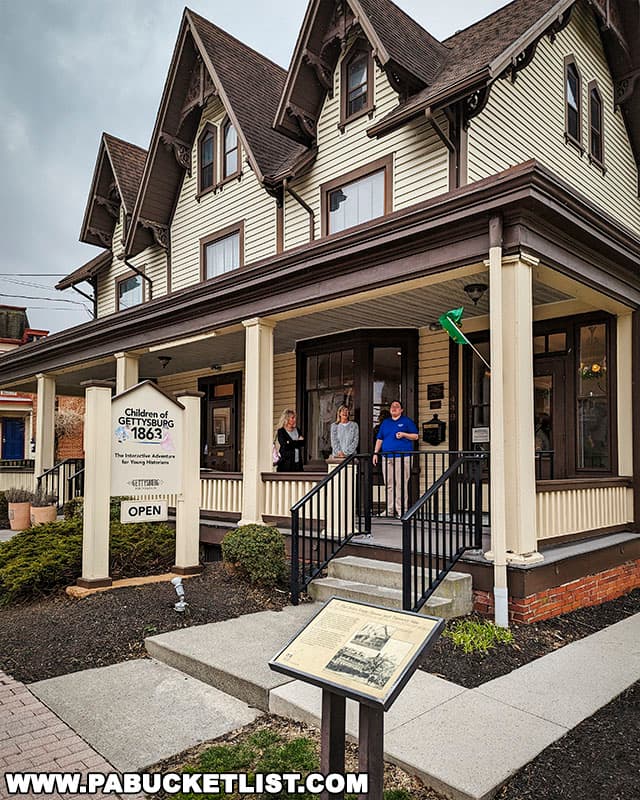
Kids can literally see themselves in the shoes of children during the Civil War, and many of the exhibits incorporate touchable elements to keep them engaged.
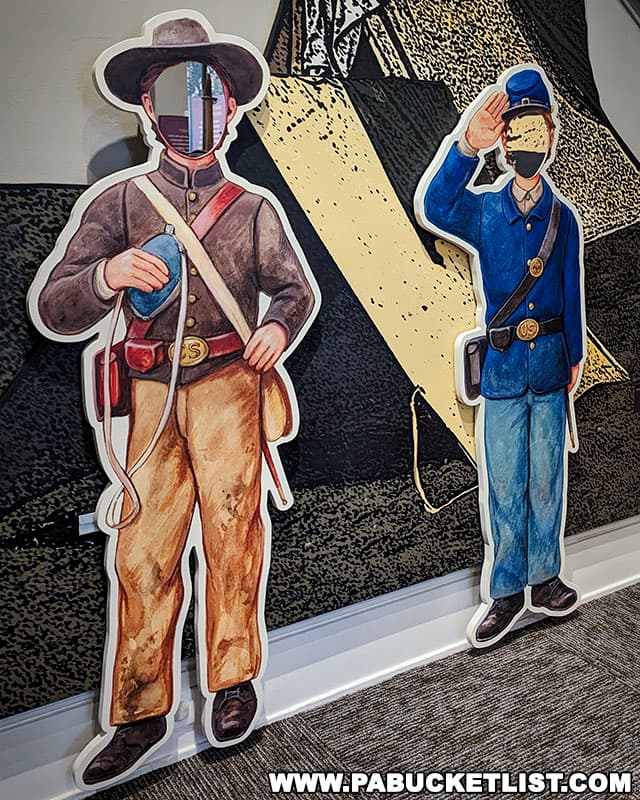
The museum doesn’t gloss over anything, but it does present the Battle of Gettysburg and its aftermath in terms that would not be scary to a majority of children.
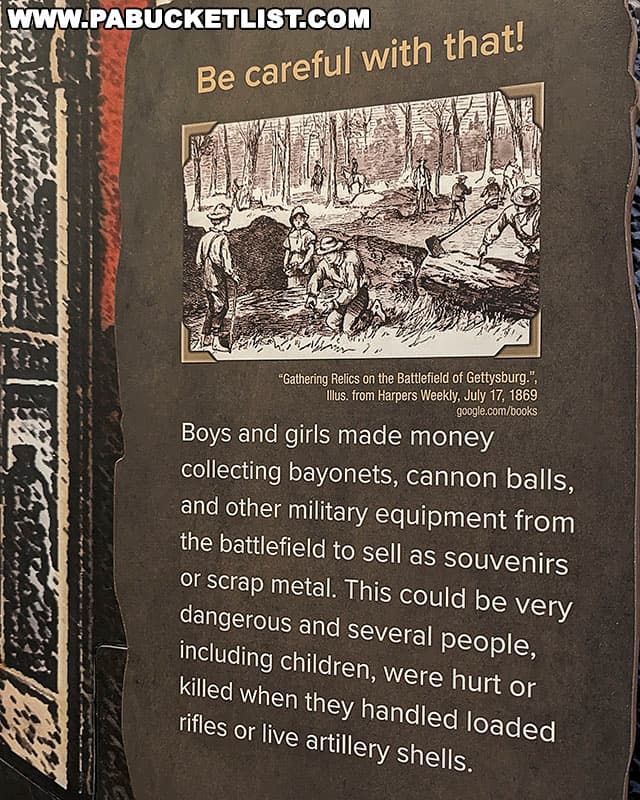
If you have kids in your group, the Children of Gettysburg 1863 museum should be a must-see during your visit.

9. Gettysburg Beyond the Battle Museum
The Gettysburg Beyond the Battle Museum shares the history of Adams County before, during, and after the epic Civil War battle that took place in and around Gettysburg in 1863.
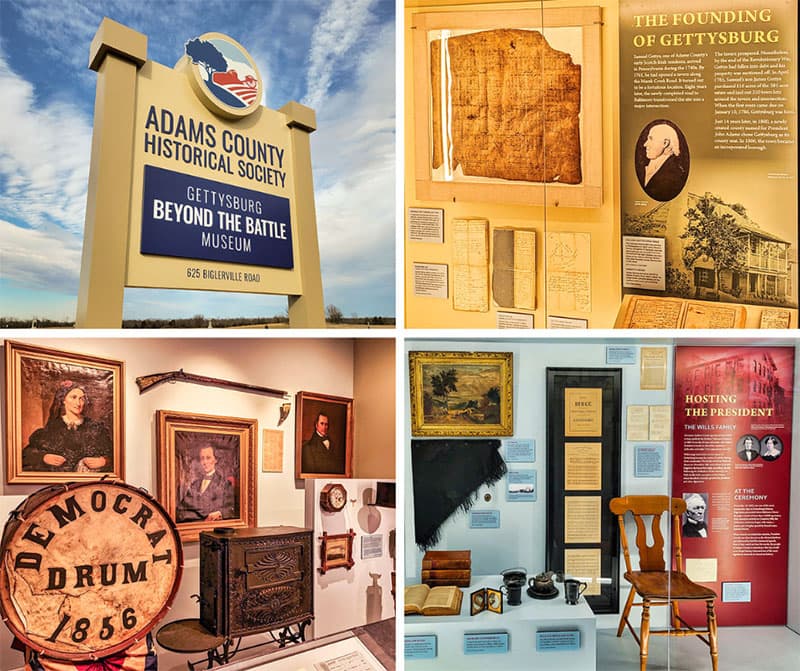
Home of the Adams County Historical Society, the museum is an engaging collection of exhibits, artifacts, short films, and immersive experiences that illustrate the history of Adams County in a memorable way.
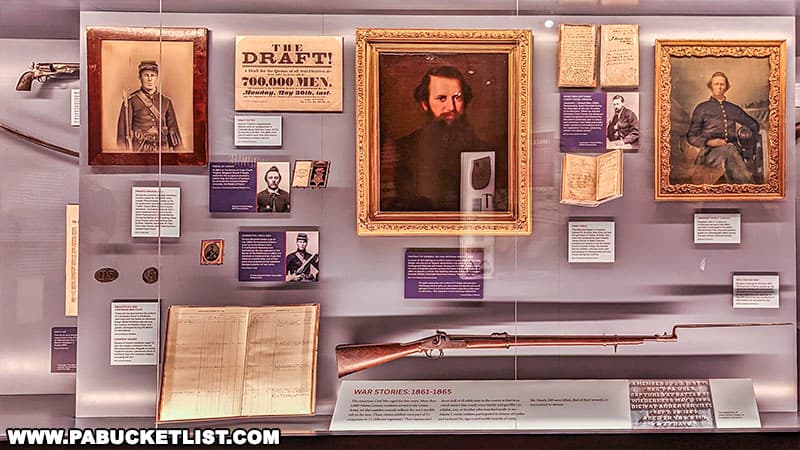
10. The Gettysburg Museum of History
The Gettysburg Museum of History is home to thousands of unusual artifacts and atypical antiquities from American history, and admission is FREE!
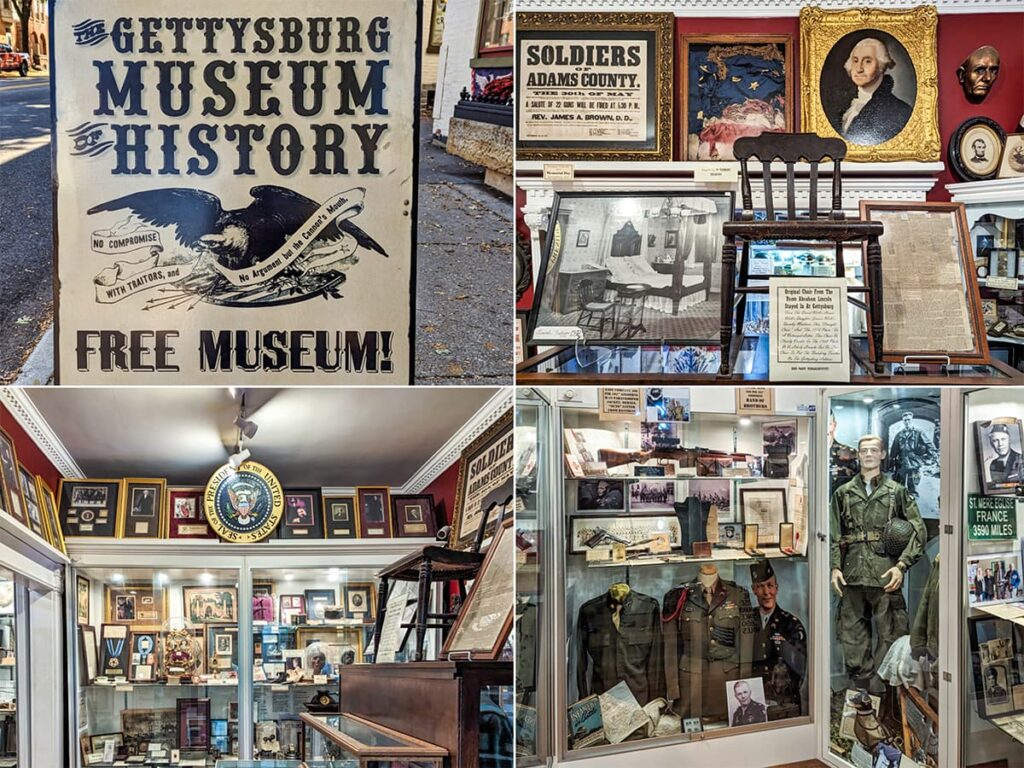
This remarkable museum, nestled in the heart downtown, offers an intimate look into the past three centuries of the American narrative through its extensive collection of incredible historic finds and personal effects from some of the world’s most famous political and military leaders.
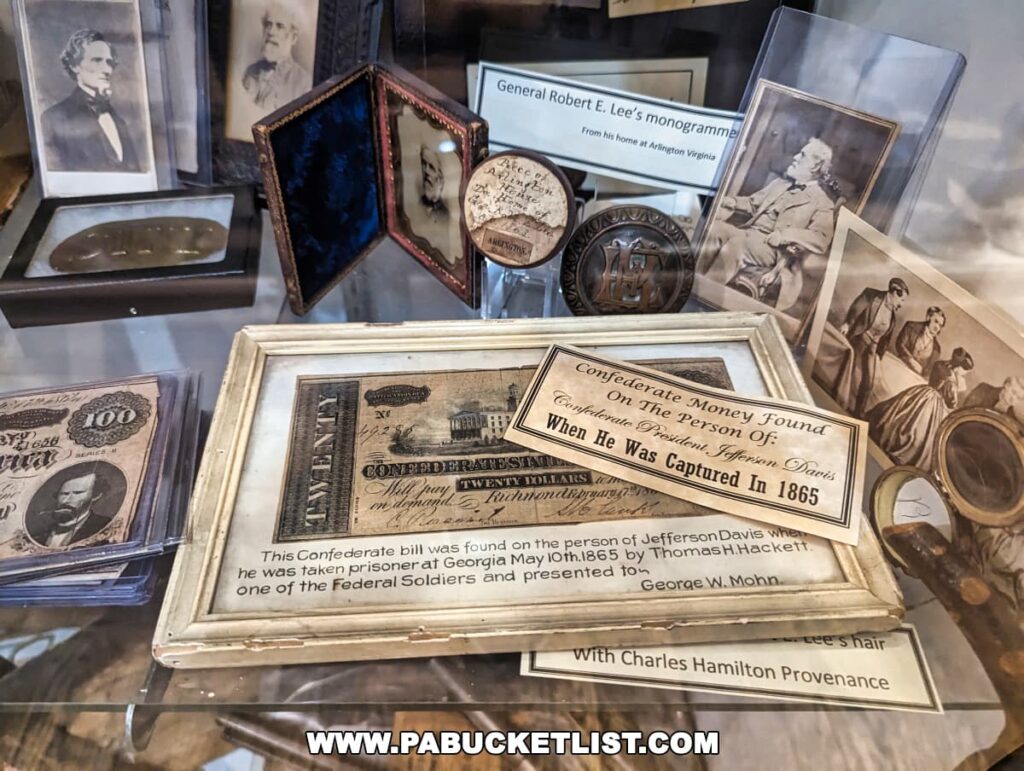
11. Dobbin House
The Dobbin House is a dining tradition in Gettysburg, located in a building constructed in 1776!
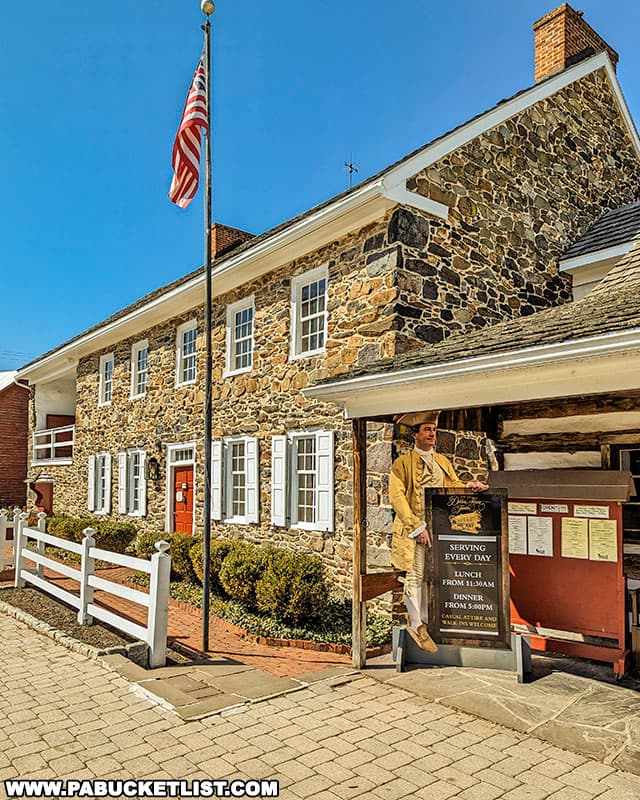
The basement of the Dobbin House is where you’ll find the Springhouse Tavern, featuring casual dining in a colonial atmosphere.
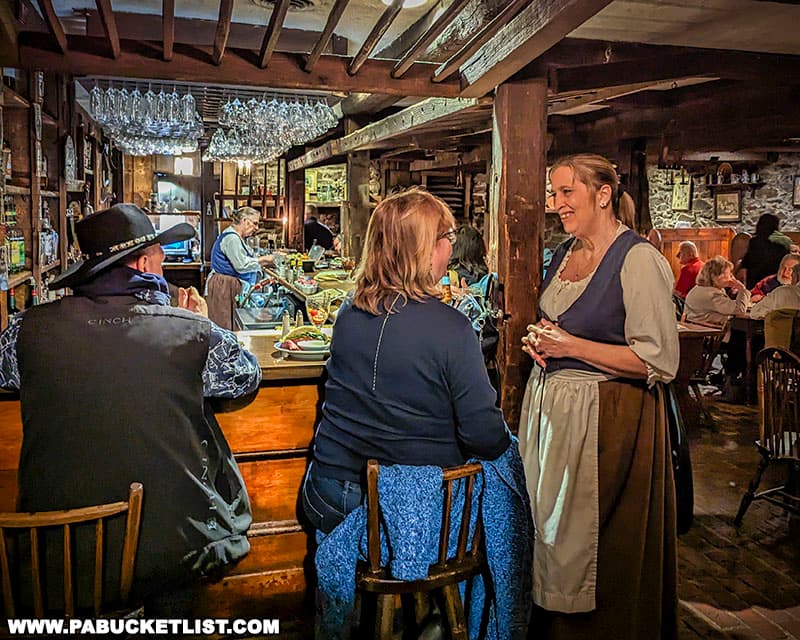
Upstairs you’ll find the Alexander Dobbin Dining Rooms, featuring a fine dining experience in six historic rooms.
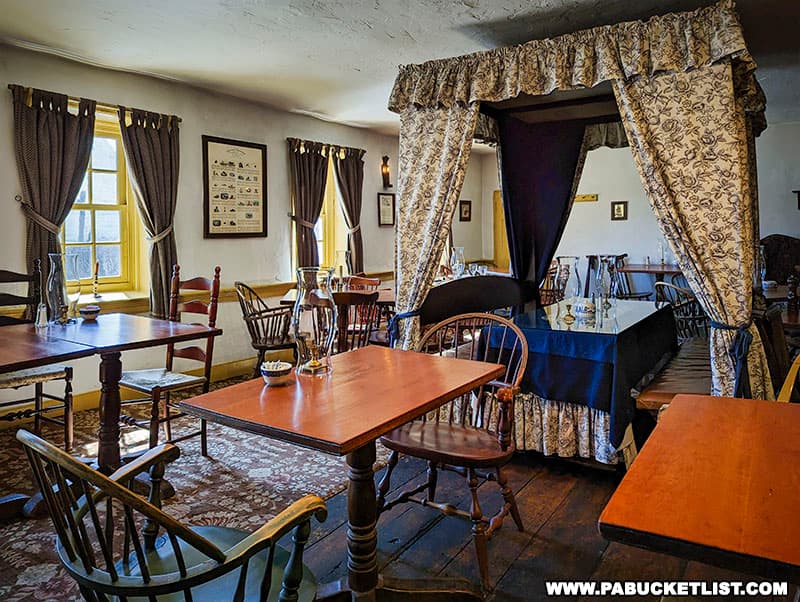
You can also take a free tour of other areas of the Dobbin House, including a secret space that served as a hideout for runaway slaves along the Underground Railroad.
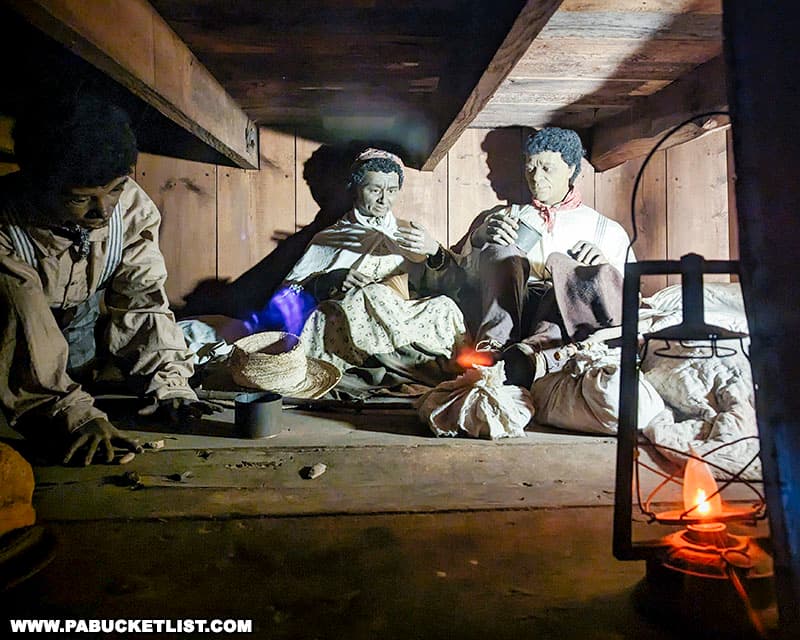
I’ve eaten at a lot of colonial-themed restaurants in PA and around the country, and I can honestly say the Dobbin House in Gettysburg is one of my favorites!
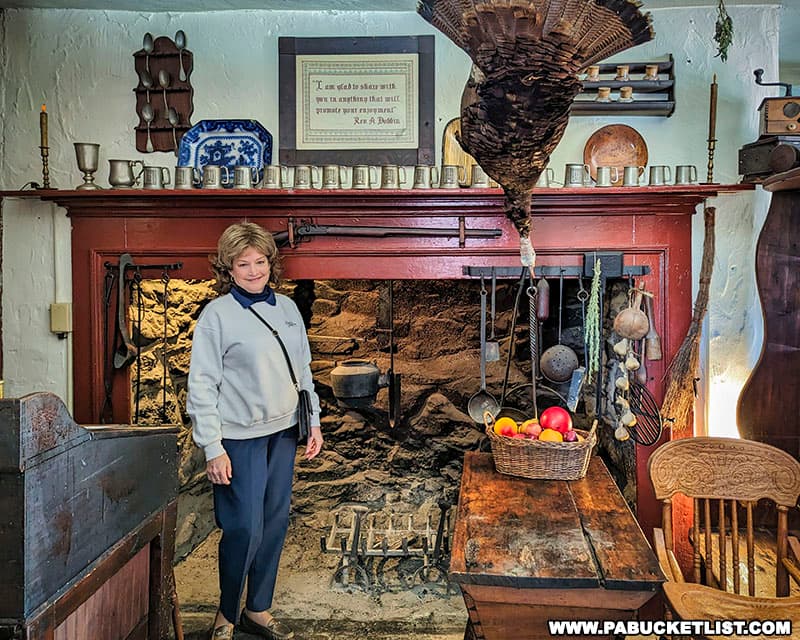
12. The Gettysburg Diorama and History Center
The Gettysburg Diorama & History Center recreates the famous Civil War battle using one of the largest military dioramas in the United States.
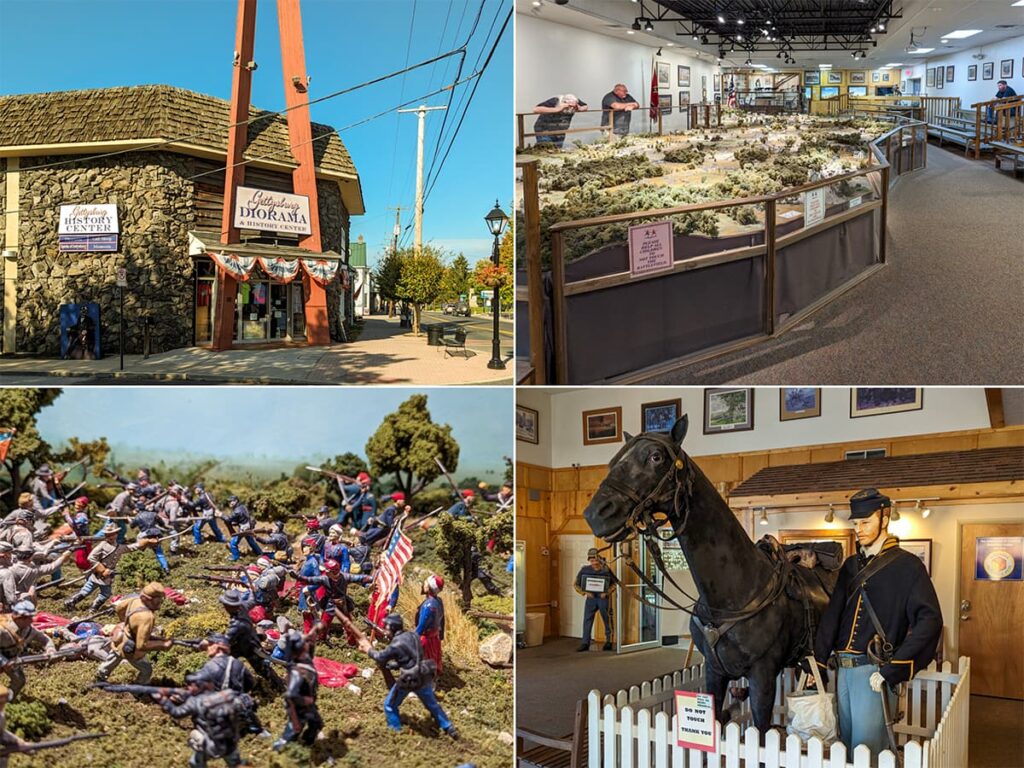
Combined with a light and sound show, along with day-by-day narration, the result is an immersive journey through one of the most pivotal moments in American history.
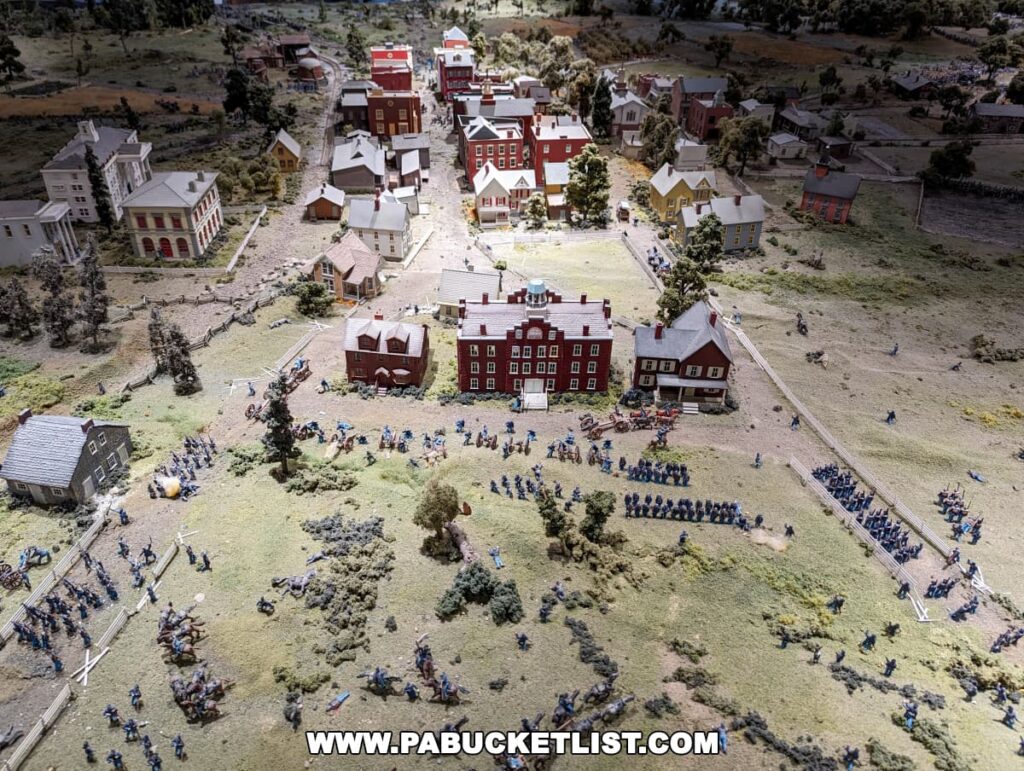
Beyond the diorama, the History Center offers a range of exhibits that delve deeper into the Civil War era.
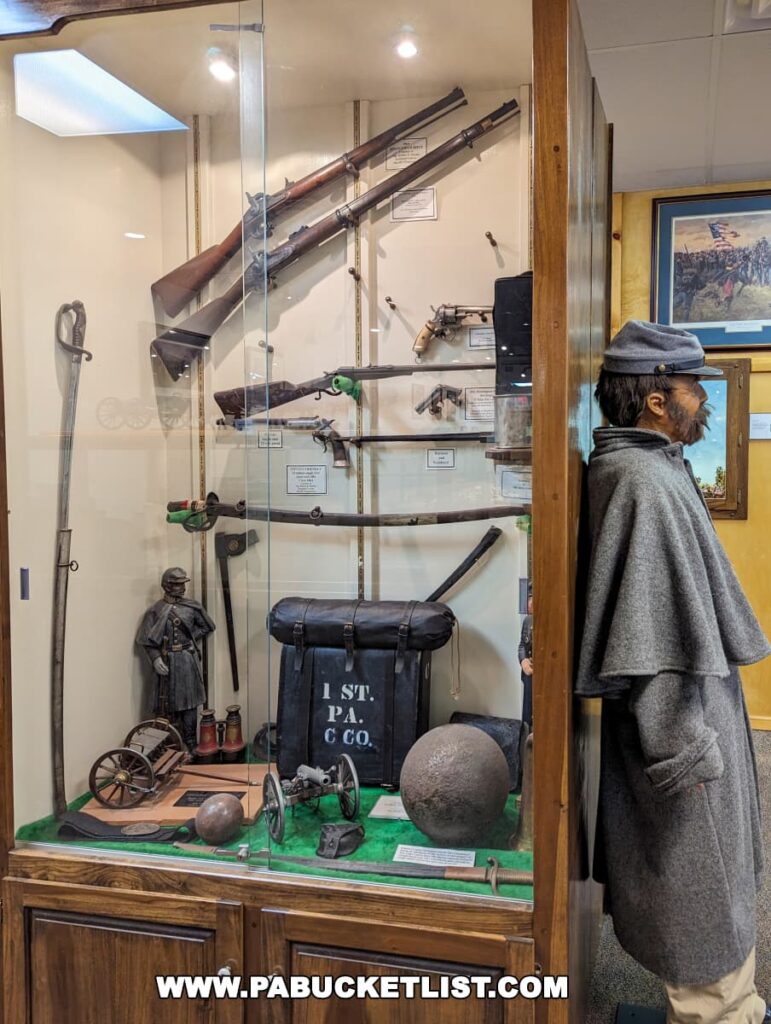
Whether you’re a history buff, a student, or just curious about this critical moment in American history, the diorama provides an exceptional overview of this famous battle.
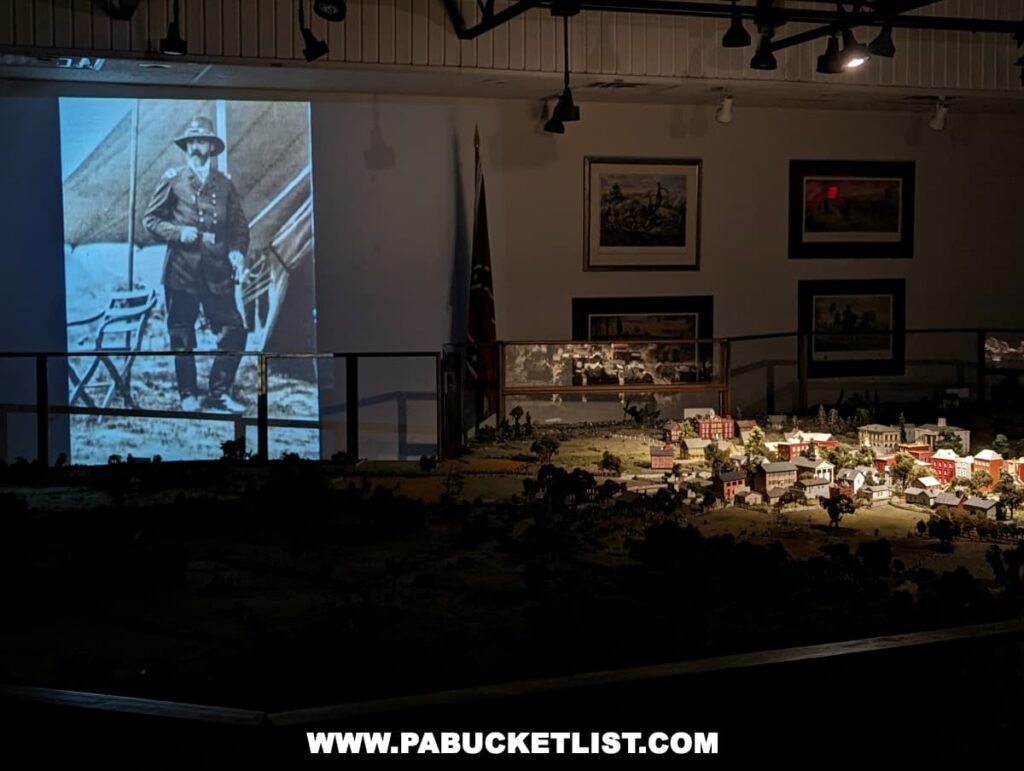
13. The Civil War Tails Museum
Civil War Tails is a distinctive museum where Civil War dioramas come to life with an intriguing twist: every soldier is depicted as a cat!
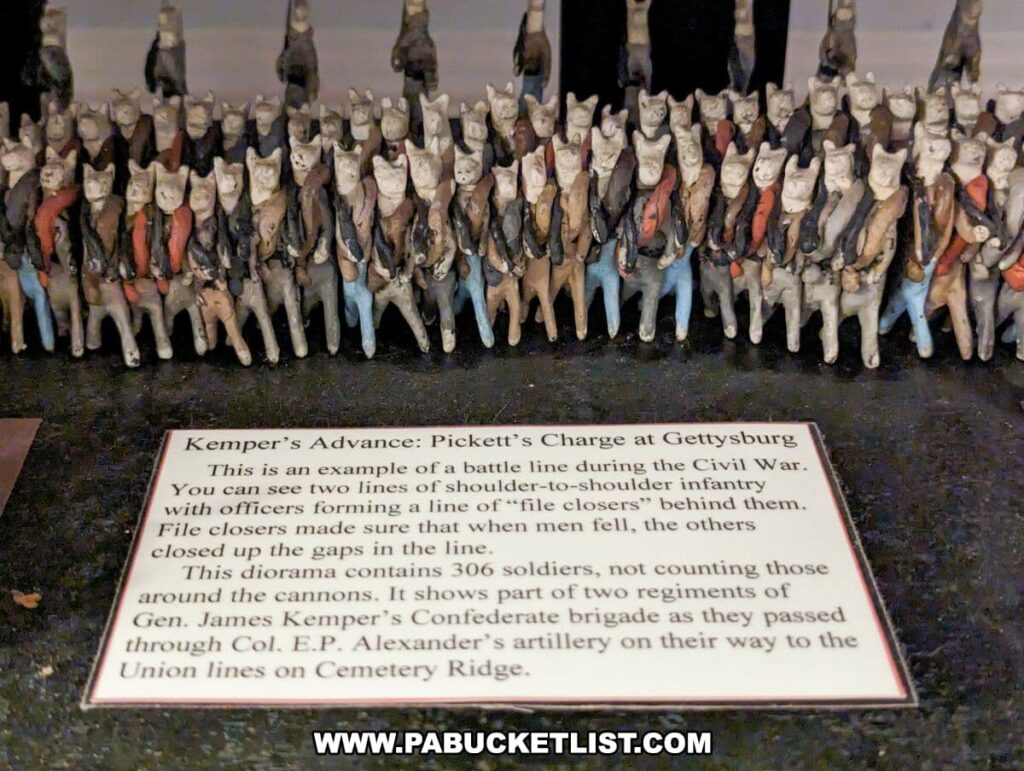
This creative approach offers a fresh perspective on the historic battles of the Civil War, combining educational content with a touch of whimsy.
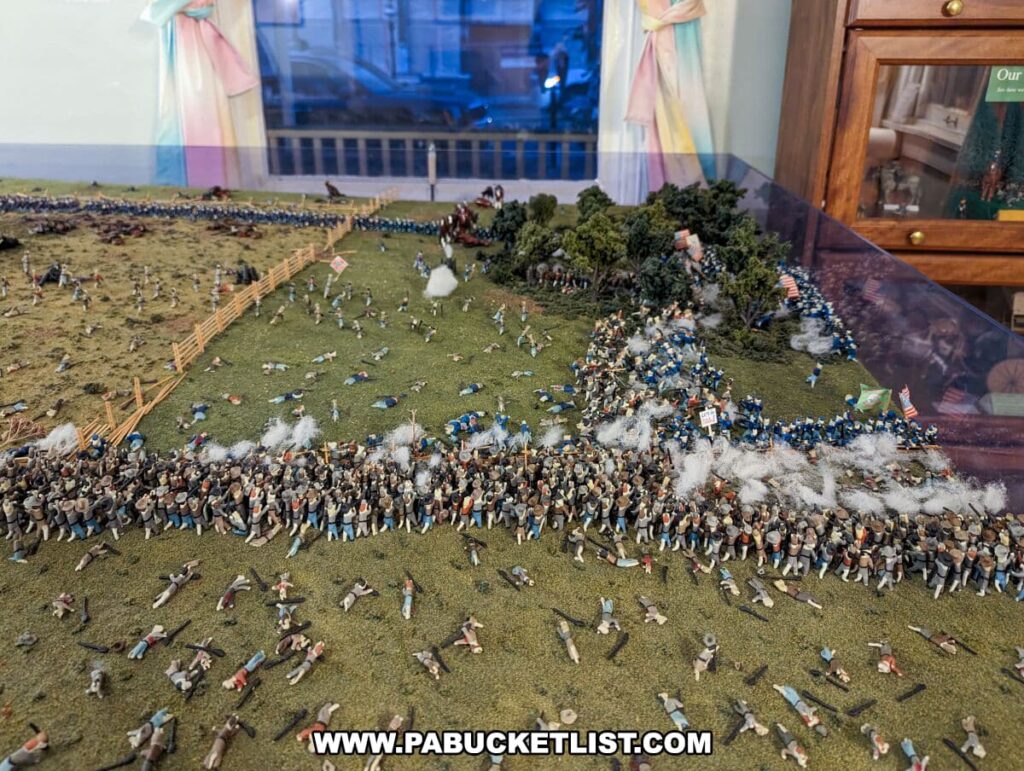
The dioramas are crafted with meticulous attention to detail, ensuring that each scene realistically portrays the events of the Civil War, albeit with feline participants.
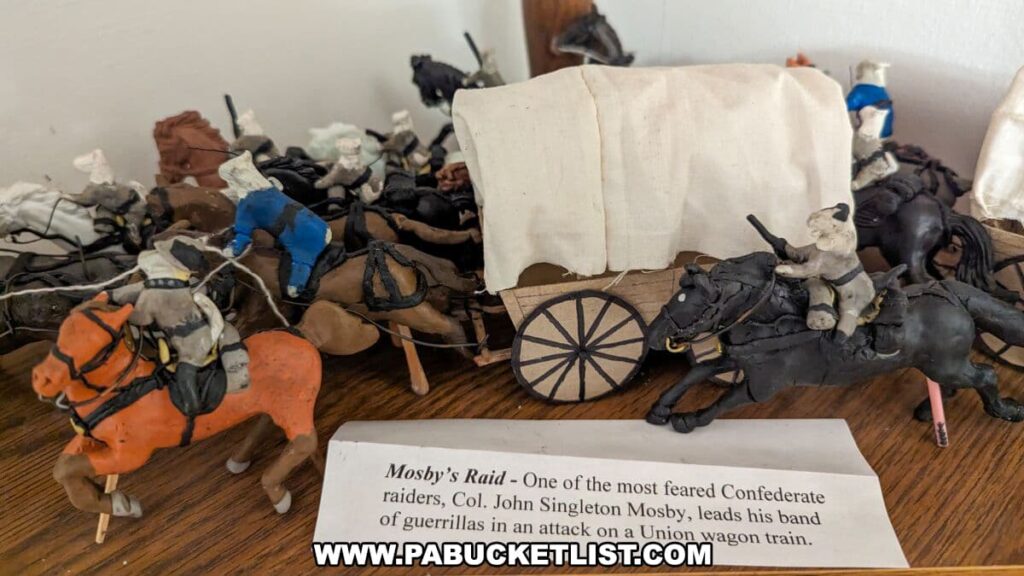
Civil War Tails is housed in a building originally built in 1869 as part of The National Homestead, a school for the orphans of soldiers killed in the Civil War.
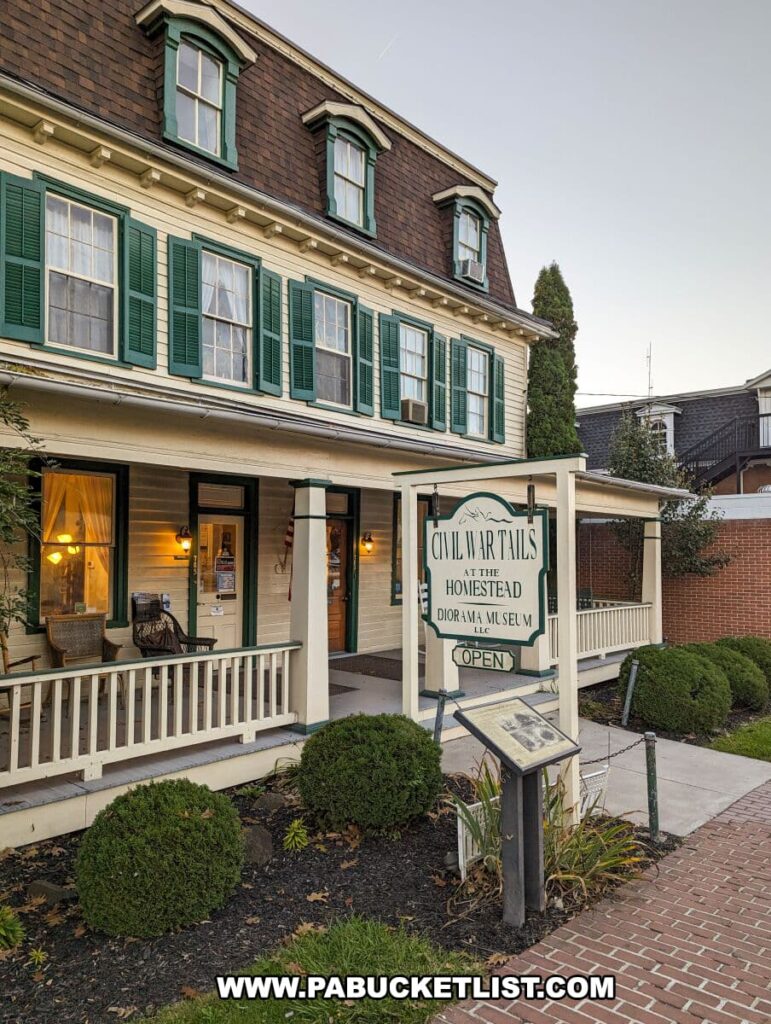
14. Sachs Covered Bridge
Sachs Covered Bridge was crossed by both Union AND Confederate troops during the Battle of Gettysburg, and was designated “Pennsylvania’s most historic covered bridge” in 1938 by the PA Department of Highways.
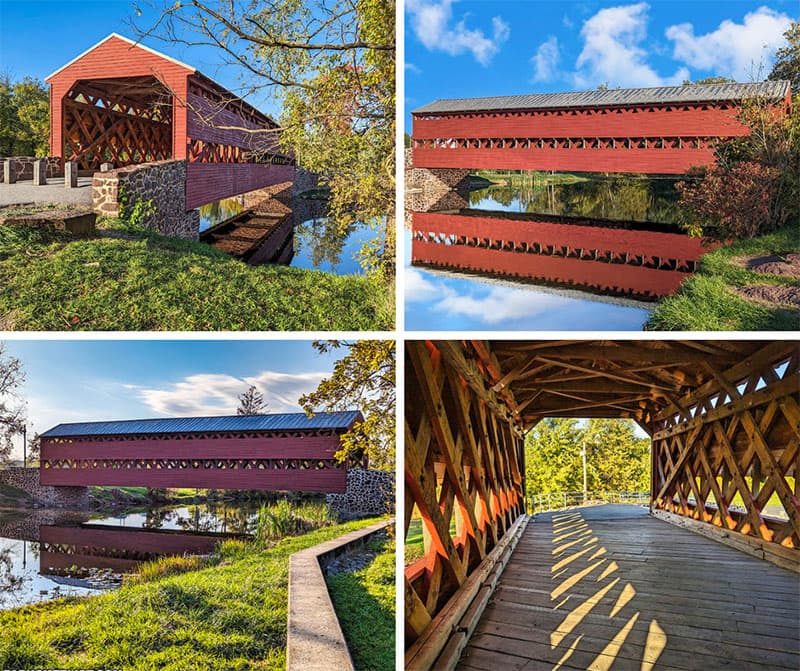
Sachs Covered Bridge was built around 1854 and spans Marsh Creek just south of Gettysburg.
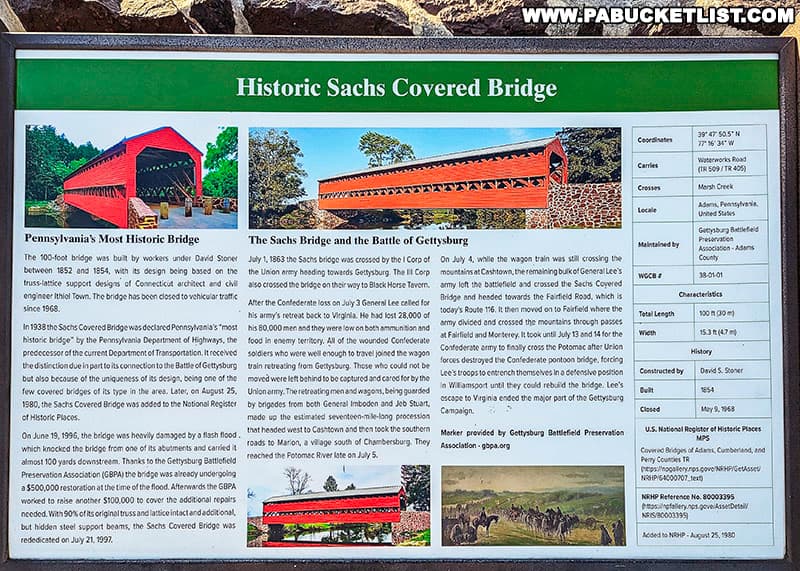
15. The WWII American Experience Museum
The WWII American Experience Museum in Gettysburg is dedicated to educating the public about the sacrifices made by Americans during the largest conflict of the 20th century, both on the battlefield and the homefront.
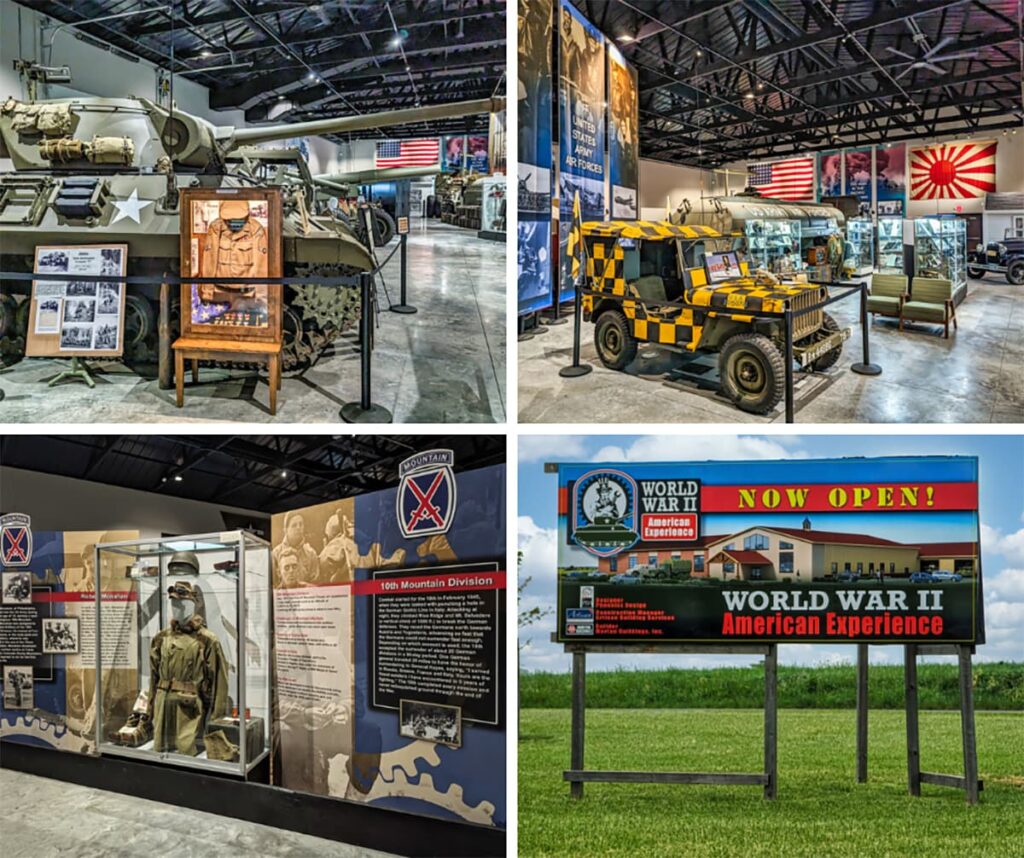
The museum honors the dedication and bravery of those who fought to win the war and preserve freedom, offering a comprehensive look at the era’s military and civilian experiences.
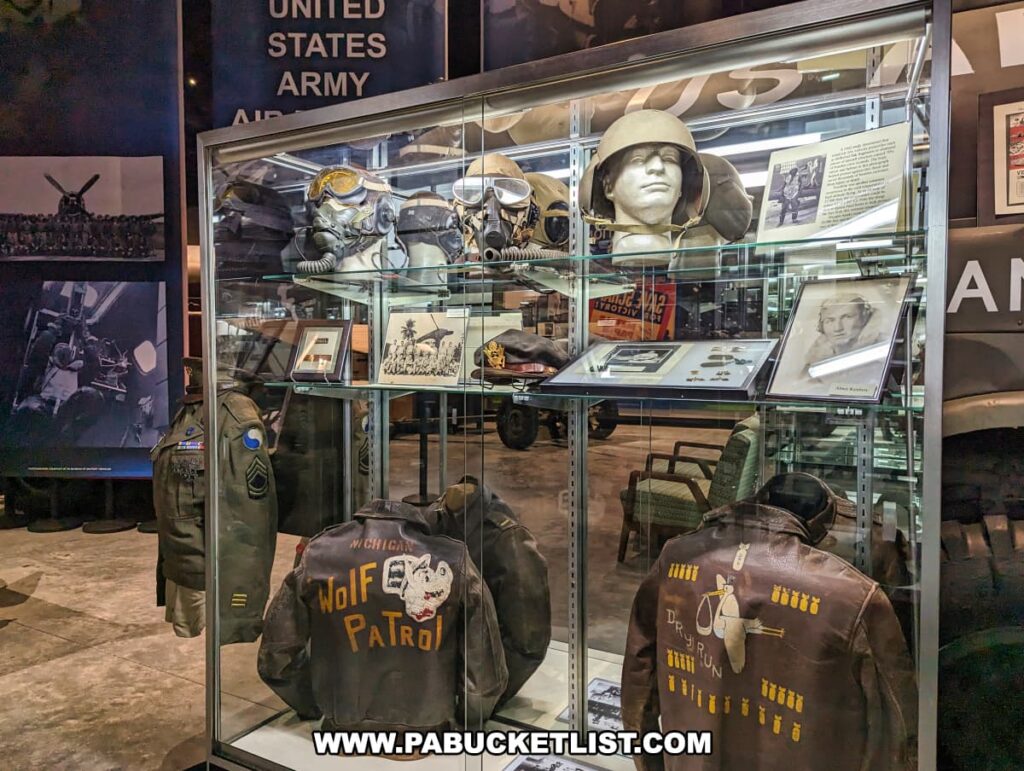
16. The Battle of Gettysburg Reenactment
The Battle of Gettysburg Reenactment features hundreds of Civil War reenactors recreating combat scenes from the famous battle that took place here July 1-3, 1863.
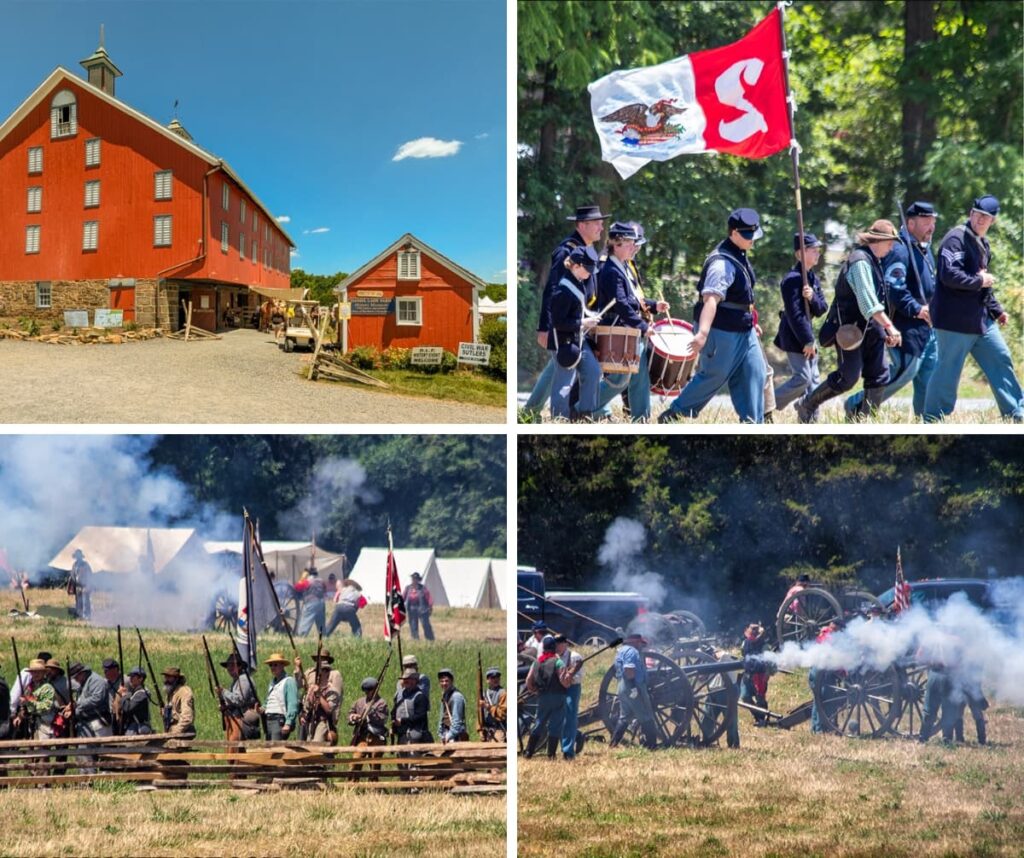
Located just a mile outside of Gettysburg on the historic Daniel Lady Farm, the reenactment provides for an immersive and educational experience that transports you back to a pivotal moment in America’s past.
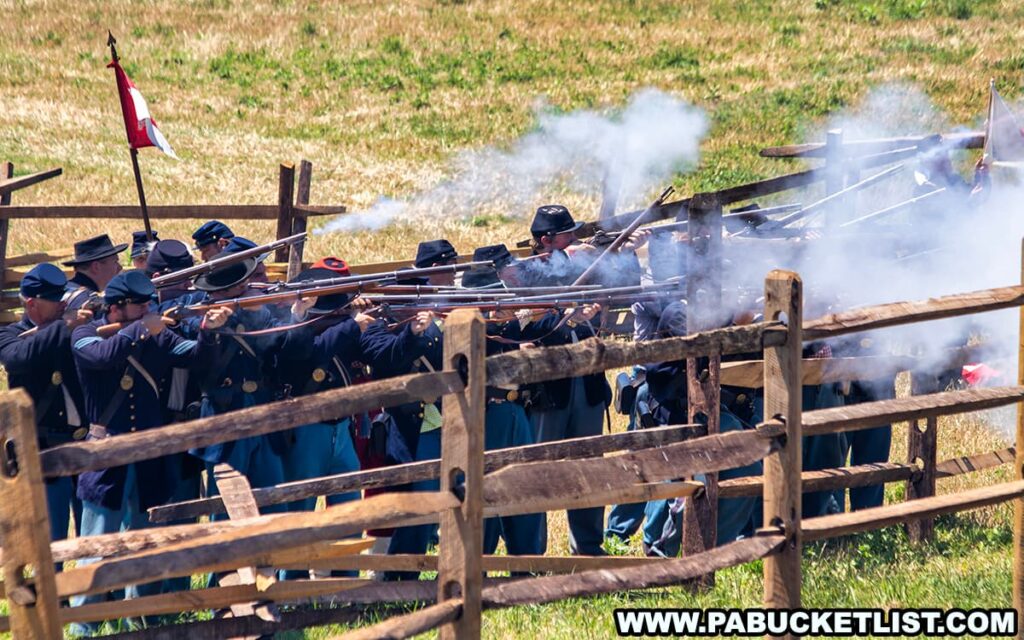
So there you have it – 16 of the best things to see and do in Gettysburg!
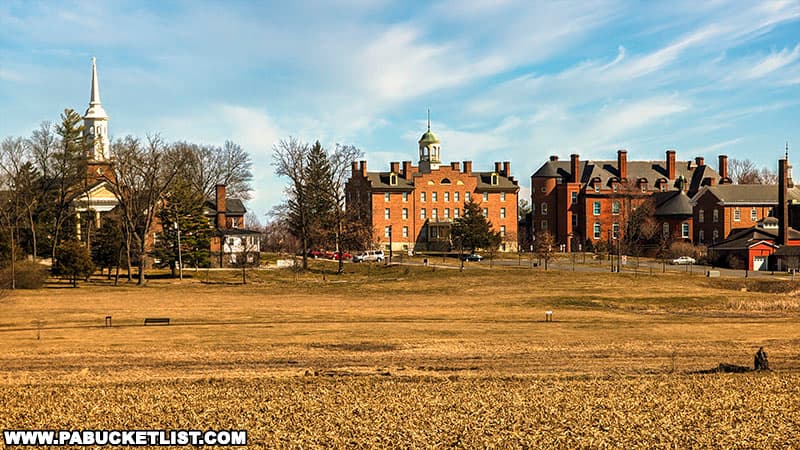
And if you didn’t see your favorite Gettysburg destination on this list – don’t worry.
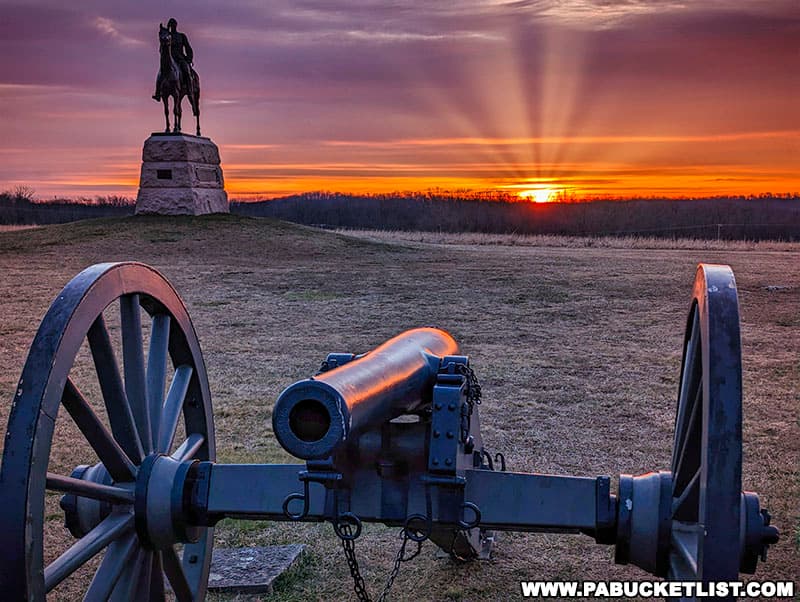
I’ve got LOTS of other Gettysburg-related attractions yet to write about in the coming weeks and months!
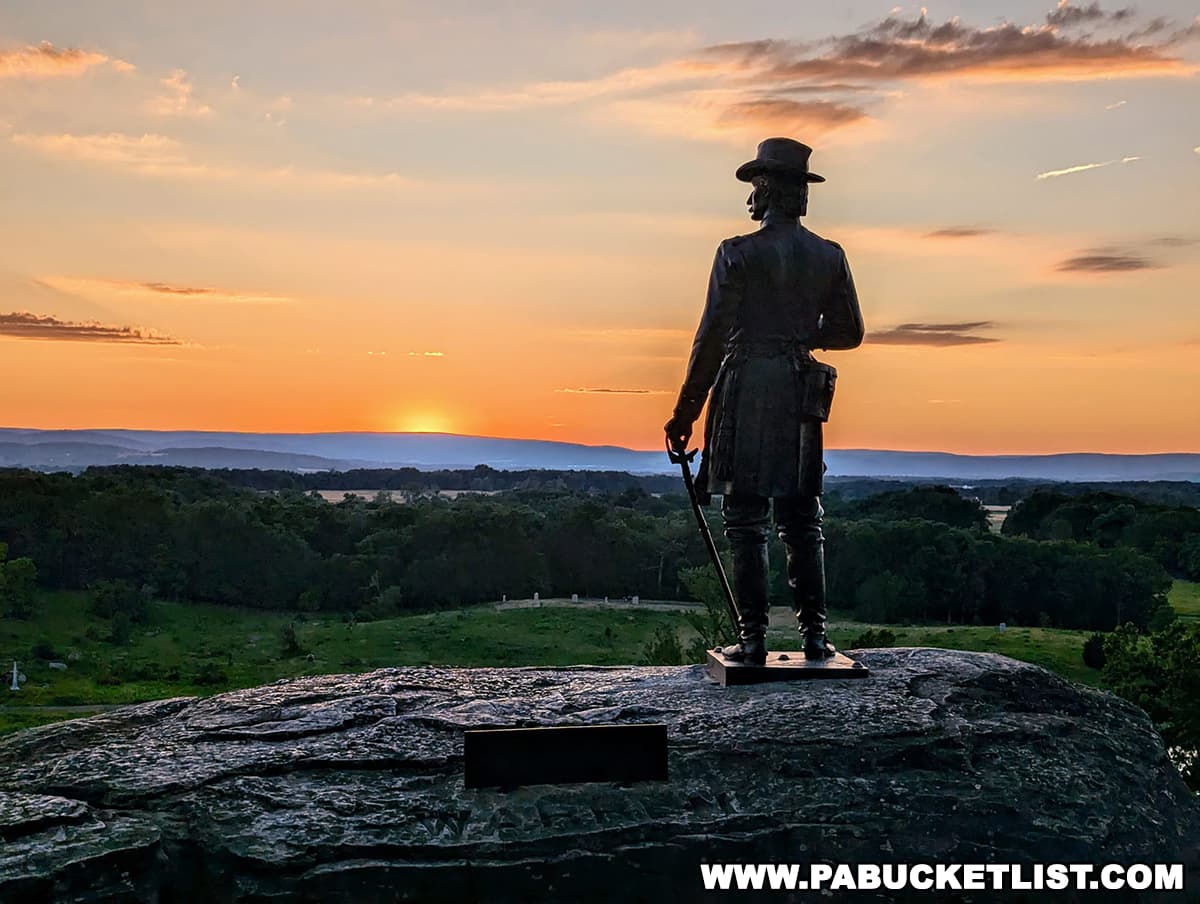
Nearby Attractions
The Christmas Haus near Gettysburg is a one-of-a-kind marketplace for German-made Christmas ornaments, decorations, and accessories!
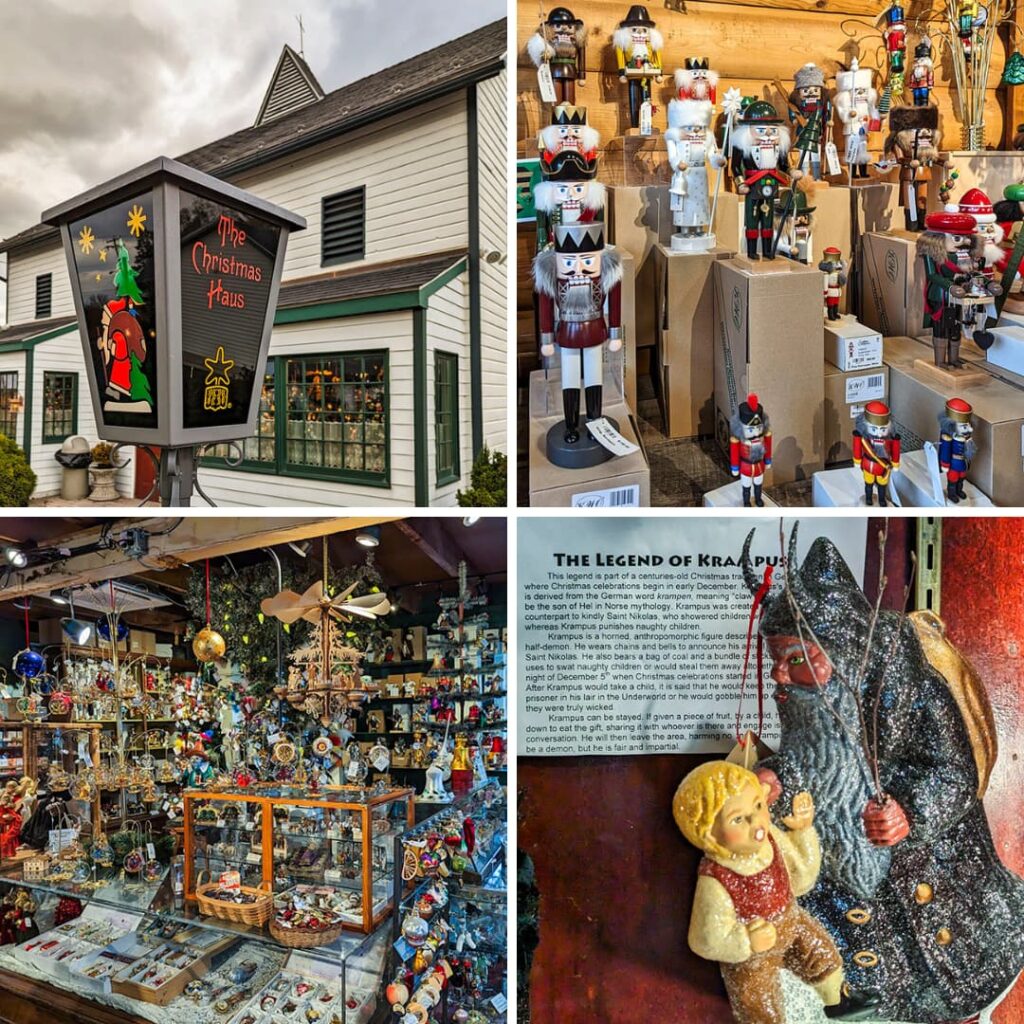
The historic Round Barn near Gettysburg is one of the most interesting and beautiful barns in Pennsylvania!
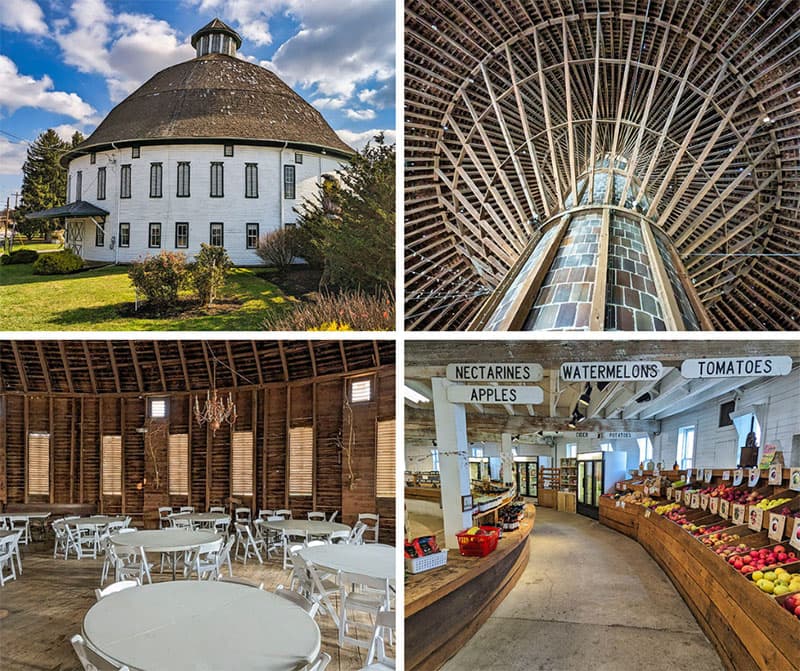
Mister Ed’s Elephant Museum and Candy Emporium near Gettysburg just may be the best elephant-themed roadside attraction in Pennsylvania!
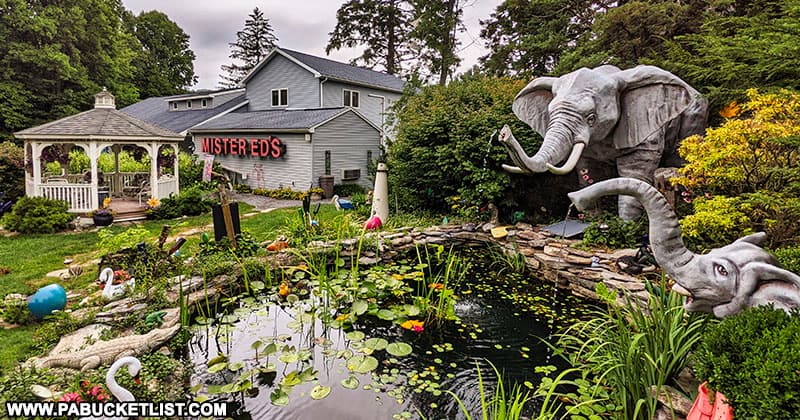
10 Must-See Attractions in Franklin County is your guide to some of the best things to see and do just west of Gettysburg.
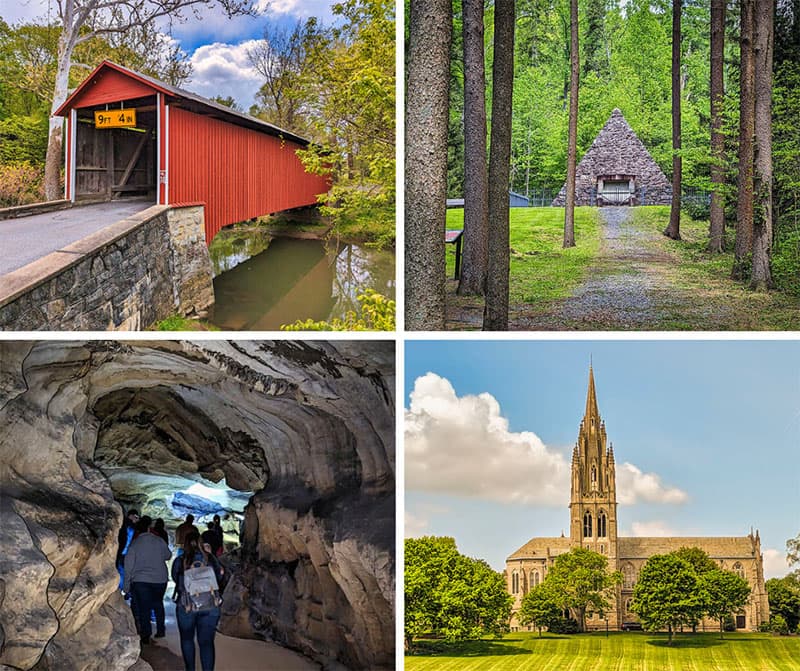
Did you enjoy this article?
If so, be sure to like and follow PA Bucket List on Facebook, Instagram, and/or Pinterest to learn more about the best things to see and do in Pennsylvania!
Click on any of the icons below to get connected to PA Bucket List on social media.
